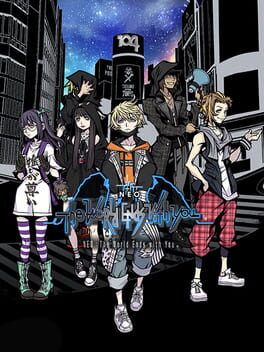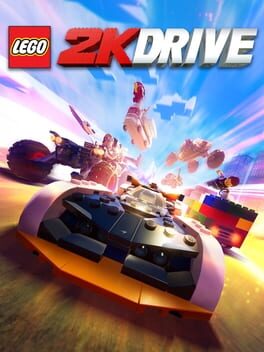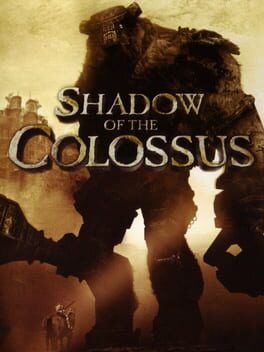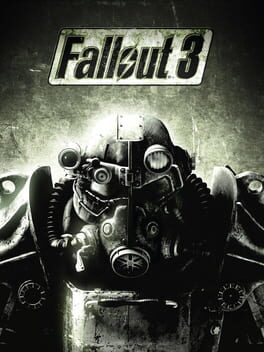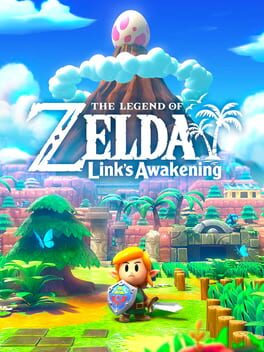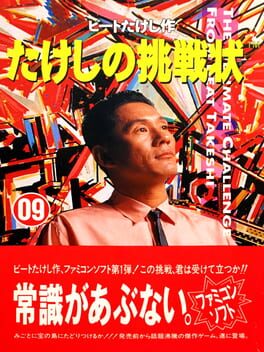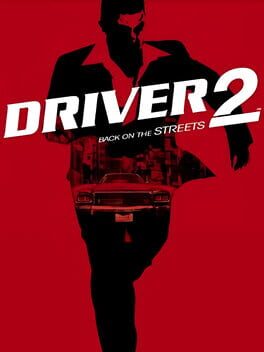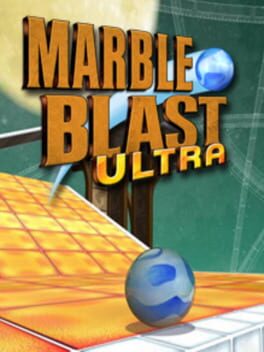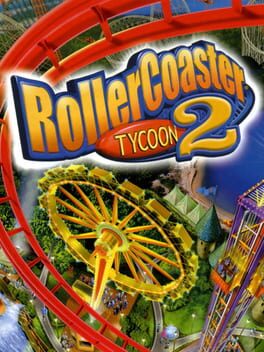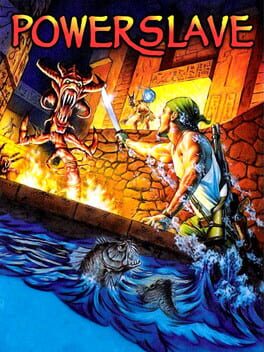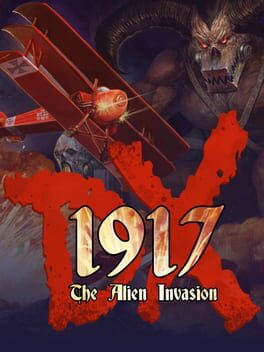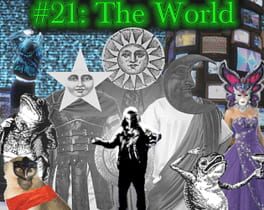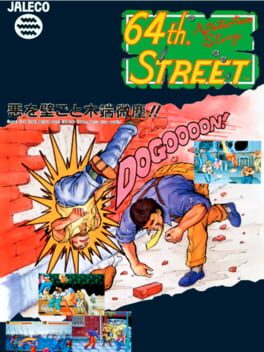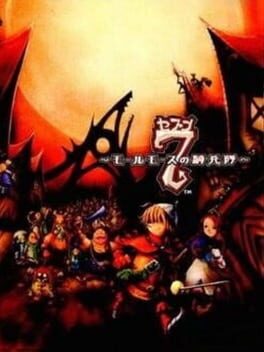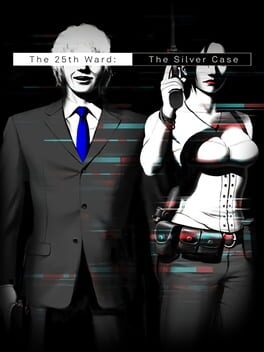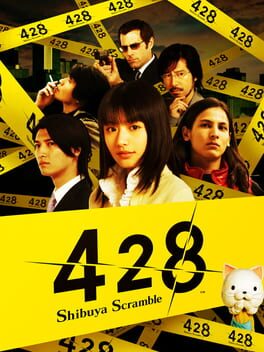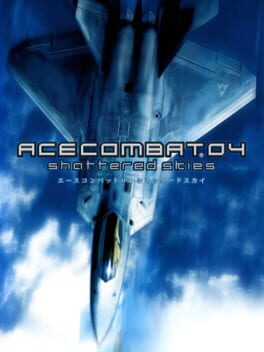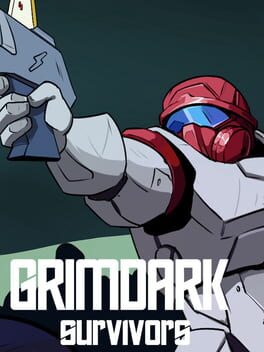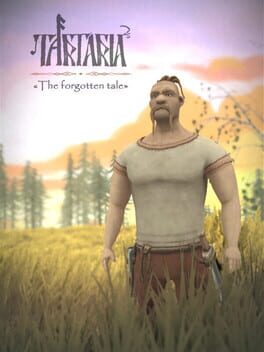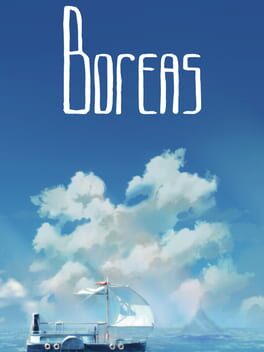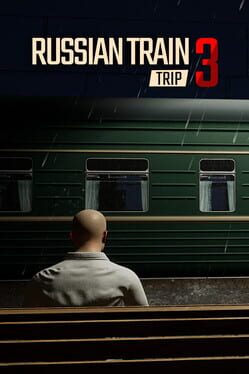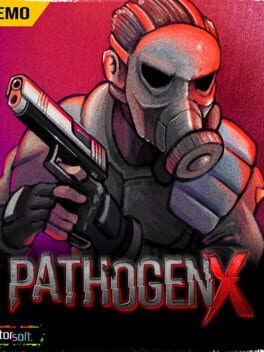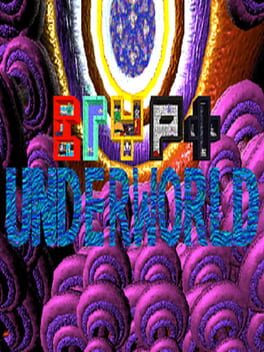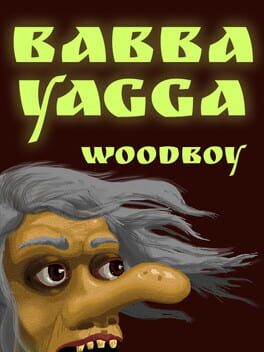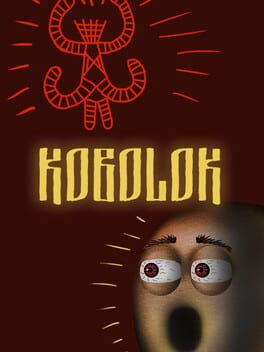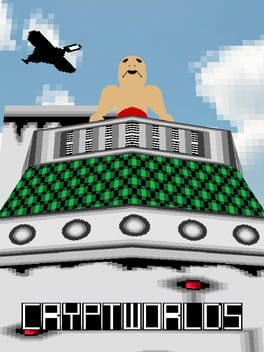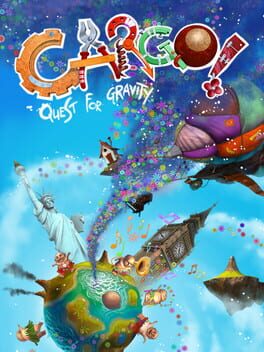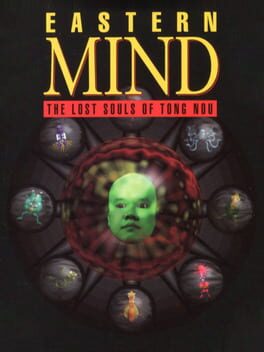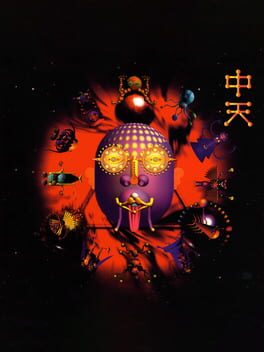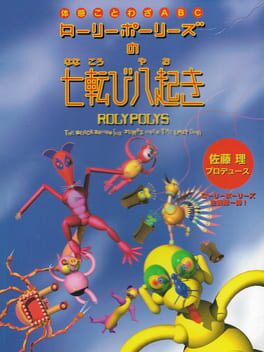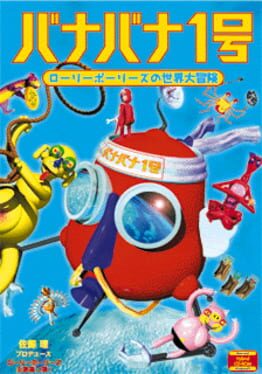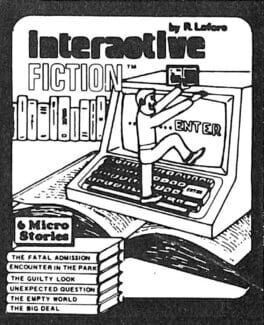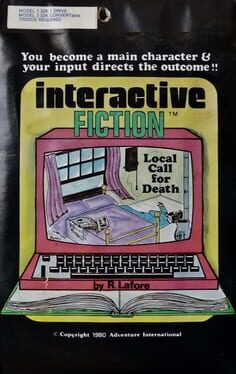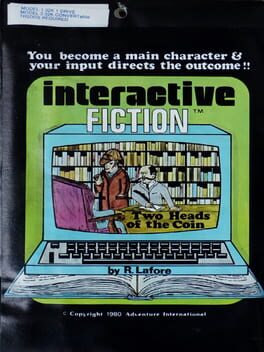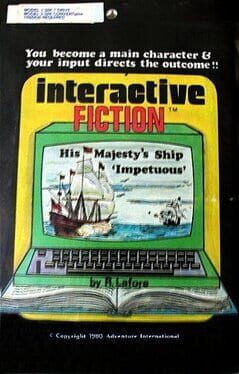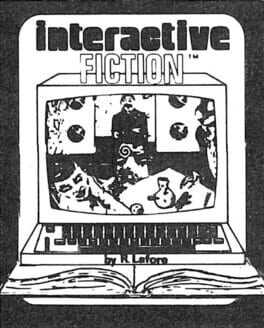avast
8 reviews liked by avast
For the first game to be set in a, at the time, current Shibuya was very important in the style and identity of the game both aesthetically and thematically. It was the story of some teenagers seeing the world they lived in with reality juxtaposed within the reaper game, a way to put an outsider's perspective. This was especially important for the main character, Neku, who started the game feeling isolated from that world and then suddenly the first thing he had to do was to read into everyday people’s mind and find a partner in order to survive. Starting from more superficial and direct elements, like the fashion in every district influencing and being influenced by your presence, getting into other thoughts and trying to guide their thinking in the right way… Neku senses opened. Yes, it was still that Shibuya Scramble where you cross with hundreds of unknown faces everyday, but anyhow still a world where Neku is not insignificant, just a part of everything, hence the original title, as cheesy as it may be: It's a Wonderful World. Even though the game stuck with me at the time, replaying it a few years ago was much colder since apart from the premise it didn't really capture me, but at least I could see and appreciate the intention.
NEO is a late sequel, a sequel that maybe never was needed, a sequel asked for just because if you like a game you must ask for more. NEO fails both at trying to capture both the sensations of the modern world and upon reflecting on the place that was left behind in 2007. The most minimum sense of intention is gone, the reaper game is repeated just because that is what it was about, now everything is about an amplified lack of inspiration that before already destroyed the rhythm of a quite catchy premise. There is nothing.
NEO is a late sequel, a sequel that maybe never was needed, a sequel asked for just because if you like a game you must ask for more. NEO fails both at trying to capture both the sensations of the modern world and upon reflecting on the place that was left behind in 2007. The most minimum sense of intention is gone, the reaper game is repeated just because that is what it was about, now everything is about an amplified lack of inspiration that before already destroyed the rhythm of a quite catchy premise. There is nothing.
LEGO 2K Drive
2023
I don't feel it's controversial to say this - we are living in the worst era of video games in the medium’s history. In this post-creative type age, AAA games are designed by corporate committees, the bleeding hearts and artists chained to their whim. Here's $10 billion dollars, make a game. Your livelihoods are threatened if it falls beneath our expectations, except not really because we're going to lay off 60% of your team anyway after launch. We want a remake of an old classic of yours now that we've bought the rights from your old publisher - we'll give you no more than five years to finish regurgitating the same game you made in a fifth of the time two decades ago but your game will still come out unpolished, unappreciated, your bloody hands and dried tear ducts for naught. We're your new publishers, we're looking for a change of pace from your streak of critically acclaimed titles - we feel a live service game will be more beneficial to us. We’ll be looking into layoffs and a potential merger if the Metacritic score doesn’t meet our expectations. It cannot be understated or made any clearer - the bubble is not about to burst; the bubble is bursting.
It goes without saying, and there is no exception in this day and age, that if a AAA game is good, it is good in spite of any grievous sins it commits. LEGO 2K Drive is a fun arcade racer. LEGO 2K Drive also costs $60 USD, has five consecutive battle passes each locked behind their own purchase, and in-game currency is drip-fed at a consistency I’ve seen more generous in Korean F2P mobile games.
What is the point of sending obviously hardworking, dedicated game developers to this critical death? Why must creative teams have to be chained to the ankles of executives uninterested in art form - merging, dissolving, firing developers at will off the weights of failures not their own? 2K Drive is fun. Undoubtedly. The divide between the joy of its loving arcadey gameplay and creative spirit to the horror of its fleshy, bleeding abscess of finance-leeching rotting flesh is too palpable. Though leeching it does, because after some time the imbalance grows too great.
User-made custom car creations are downloadable in-game in its current state, but I distinctly remember why publisher 2K had to announce this wasn’t planned to be before release, much to the chagrin of, well, everyone. What’s the point in creating if you can’t share with the world? The answer became obvious almost immediately when looking within. Why do I get 10 Brickbux for getting a gold medal in a challenge, and 50 when winning a race, when a fucking cosmetic car costs 10,000? Oh, that’s an easy answer, because you’d have no reason to be pressed to pay real money to boost your in-game currency if you could just download the cool user-created stuff online. This isn’t counting the five consecutive battle passes. This game also costs $60.
2K Drive’s progression is, by design, torturous, but its gameplay is at a clear odds from it. Cars handle well, its challenge missions engaging and varied, its races variably frantic and exciting, its story a cute and charming melting parody pot of racing story tropes. Despite finding myself growing more and more averse to the tired trend of open world games, this is where the divide is drawn with mile-wide crayon - it’s fun. The plainness of its formula is upended by the sheer joy of absurdity it relishes in - barreling through structures, rocketing through explosions of thousands of LEGO pieces both structural and minifigure (yes, you can just mow down pedestrians in this, it’s hilarious), pun-riddled dialogue both confident as it is surprisingly more endearing than annoying (something I think the LEGO games have always been good at). Unfortunately, its wholehearted spirit is progressively crushed the more time you invest, because you're expected to invest as much money as you do your own time into 2K Drive. Progression stagnates, incentives are diminished, and the only joy you can wring out after you feel closed off completely is just enjoying the online races yourself, outside of the story mode. Oh wait, no you can't, because the online also barely works.
You don’t need to stretch your neck out very far to see the state of the way multimedia is being curated today, and you don’t need a third eye and an all-encompassing andromedatic galaxy brain to see how much art today is dictated by committee - this is just the most obvious its ever looked. Underneath its Financial Terror Shield is a game that’s struggling to exist - an honest core, crying by itself, to just be a game. We’re undoubtedly worse off now, but this game wouldn’t even be much different 10 years ago. Its future also feels all too certain, being under the reins of many alike a publisher more eager to kill off a game’s entire service before they’ll let it live indefinitely without profit. It’s not just developers who’ve been demoralized and dehumanized throughout this process - you are also no longer a fan. You are a demographic, a consumer, a target market, complicit either way you look at it. If you need any further proof of the post-post times we live in, 7 companies have laid off their employees in the week I spent writing this on and off, and it’s only a matter of time before every brick in this failing structure is put back in its box. The most radical action a consumer can perform today is to download a user-made LEGO rendition of the Flintstone's Flintmobile off the content shop and not spend their actual Brickbux on the corporate-mandated seasonal coupes, and hope that when the last brick falls, we can all put a hand towards rebuilding.
It goes without saying, and there is no exception in this day and age, that if a AAA game is good, it is good in spite of any grievous sins it commits. LEGO 2K Drive is a fun arcade racer. LEGO 2K Drive also costs $60 USD, has five consecutive battle passes each locked behind their own purchase, and in-game currency is drip-fed at a consistency I’ve seen more generous in Korean F2P mobile games.
What is the point of sending obviously hardworking, dedicated game developers to this critical death? Why must creative teams have to be chained to the ankles of executives uninterested in art form - merging, dissolving, firing developers at will off the weights of failures not their own? 2K Drive is fun. Undoubtedly. The divide between the joy of its loving arcadey gameplay and creative spirit to the horror of its fleshy, bleeding abscess of finance-leeching rotting flesh is too palpable. Though leeching it does, because after some time the imbalance grows too great.
User-made custom car creations are downloadable in-game in its current state, but I distinctly remember why publisher 2K had to announce this wasn’t planned to be before release, much to the chagrin of, well, everyone. What’s the point in creating if you can’t share with the world? The answer became obvious almost immediately when looking within. Why do I get 10 Brickbux for getting a gold medal in a challenge, and 50 when winning a race, when a fucking cosmetic car costs 10,000? Oh, that’s an easy answer, because you’d have no reason to be pressed to pay real money to boost your in-game currency if you could just download the cool user-created stuff online. This isn’t counting the five consecutive battle passes. This game also costs $60.
2K Drive’s progression is, by design, torturous, but its gameplay is at a clear odds from it. Cars handle well, its challenge missions engaging and varied, its races variably frantic and exciting, its story a cute and charming melting parody pot of racing story tropes. Despite finding myself growing more and more averse to the tired trend of open world games, this is where the divide is drawn with mile-wide crayon - it’s fun. The plainness of its formula is upended by the sheer joy of absurdity it relishes in - barreling through structures, rocketing through explosions of thousands of LEGO pieces both structural and minifigure (yes, you can just mow down pedestrians in this, it’s hilarious), pun-riddled dialogue both confident as it is surprisingly more endearing than annoying (something I think the LEGO games have always been good at). Unfortunately, its wholehearted spirit is progressively crushed the more time you invest, because you're expected to invest as much money as you do your own time into 2K Drive. Progression stagnates, incentives are diminished, and the only joy you can wring out after you feel closed off completely is just enjoying the online races yourself, outside of the story mode. Oh wait, no you can't, because the online also barely works.
You don’t need to stretch your neck out very far to see the state of the way multimedia is being curated today, and you don’t need a third eye and an all-encompassing andromedatic galaxy brain to see how much art today is dictated by committee - this is just the most obvious its ever looked. Underneath its Financial Terror Shield is a game that’s struggling to exist - an honest core, crying by itself, to just be a game. We’re undoubtedly worse off now, but this game wouldn’t even be much different 10 years ago. Its future also feels all too certain, being under the reins of many alike a publisher more eager to kill off a game’s entire service before they’ll let it live indefinitely without profit. It’s not just developers who’ve been demoralized and dehumanized throughout this process - you are also no longer a fan. You are a demographic, a consumer, a target market, complicit either way you look at it. If you need any further proof of the post-post times we live in, 7 companies have laid off their employees in the week I spent writing this on and off, and it’s only a matter of time before every brick in this failing structure is put back in its box. The most radical action a consumer can perform today is to download a user-made LEGO rendition of the Flintstone's Flintmobile off the content shop and not spend their actual Brickbux on the corporate-mandated seasonal coupes, and hope that when the last brick falls, we can all put a hand towards rebuilding.
Portal with RTX
2022
This has to be the funniest marketing gimmick ever made. Honestly. It makes the Hatsune Miku Dominos promotion or the Saint's Row 4 ultimate edition seem tame.
For starters, it's just a copy of Portal with an RTX Remix injector bundled on. It comes with the dev menu.If you want to play Portal 1 for free you can get this, push Alt+X and disable everything. [This ended up not being true, I forgot that I owned Portal 1.]
But if you want to actually experience the shitshow that is Portal With RTX, you can also just open the menu and undo the shitty DLSS upscaler preset the game comes with. Setting it to any of the normal presets massively boosts performance. Yes, the default settings are an attempt to convey to laymen that their RTX card isn't good enough and they need a better one.
As for the actual game, it's a fascinating look into the minds of people obsessed with 'graphics' as a concept to such an extent that it becomes a detriment.
Portal With RTX looks terrible. Just absolute dogshit. I think whoever signed off on this should be forced to do a Drama course in University using only Garry's Mod models and lighting.
The original Portal has a very intentional, meticulously refined aesthetic. It is very bright, cold, and unwelcoming. Almost nothing in Aperture is rounded, with most of the geometry being angular brutalist walls and panels that look about as inviting as a field of landmines. It's very obvious just from 5-10 minutes of Portal that nothing lives in Aperture and nobody has been there in ages. Later on, you literally pull back the curtain of the testing chambers and run through back corridors, maintenance shafts and warehouses which completely turn the aesthetic on its head... By design. Intent. Yes, that's the word we're focusing on: 'Intent'.
Because Portal With RTX takes a sledgehammer to that meticuously crafted aesthetic. Chambers are now much darker, being lit up by overtuned light sources cast by either the few ambient lights, the lights bolted onto doors, or the red buttons. The latter in particular bathe everything in a sickening red glow that's so overdone it makes many Garry's Mod maps seem like professional work. There isn't really much of a difference now between the chambers and the lategame areas as a result.
But.
But.
There's a worse problem.
Whenever I talk about game design to people I'm friends with, I will more likely than not bring up Valve's amazing ability to signpost things without explicitly having a character say "go here", or having a big flashing arrow on the HUD telling you where to go. Most of the time they'll simply have lights, a literal sign, or clever lighting to guide you. Portal 1 in particular was great for this.
Portal With RTX is horrible. The 'modern' lighting gives equal importance to everything, and in a game where the lighting was handcrafted, this means player guidance is at an all time low. I cannot imagine this being your first experience with Portal, or Valve games.
Now, I'm a Portal autist, if you put a gun to my head and told me to run this game blindfolded, I'd be done before you had the gun loaded. For someone whose first experience with Portal is this game, though? They're in for a world of hurt, because in some chambers the lighting is so bad that it can be difficult to see cubes or doors at first. The later areas are sometimes pitch black, which is an awful statement to make about a mod for a game where nothing is pitch black BY DESIGN.
When I say "This is just Portal 1 with an RTX injector", there's no word of a lie there...
...Which means the developer commentary is still there. Yes, you can listen to the minds at Valve Software elucidate you as to how they very intentionally, carefully and almost neurotically tailored every single aspect of this game to perfection, all while playing a mod that's about as carefully created as AI art.
And you know what? AI art is a good comparison, because this feels like AI art. There's no regard for design, or consistency, or that magical keyword intent. Just a manic, soul-destroying fixation on 'looking good'. Beauty doesn't have to mean anything to these people, it just has to look good at a cursory glance. Spiritually, there's no difference between this... """product""", and going onto Midjourney and typing "portal realistic". This is very clearly a product made by and targeted at an audience for whom the word 'better' automatically means 'prettier'.
I was neutral on raytracing before actually getting a card capable of it, not really caring for the whole debate. I found devout shooters of it to be annoying, and devout haters of it to be wasting their time on what I perceived as the little brother to PhysX and HairWorks - two of Nvidia's other gimmicks that everyone replicated with ease.
After this, and seeing how ineffectual it is in Cyberpunk 2077/Mechwarrior 5/Resident Evil 4? Raytracing is a scam, dude. You can do better shit with Reshade, and it's free.
The original Portal is ten dollars. On sale, it usually becomes a dollar. Go play that instead.
For starters, it's just a copy of Portal with an RTX Remix injector bundled on. It comes with the dev menu.
But if you want to actually experience the shitshow that is Portal With RTX, you can also just open the menu and undo the shitty DLSS upscaler preset the game comes with. Setting it to any of the normal presets massively boosts performance. Yes, the default settings are an attempt to convey to laymen that their RTX card isn't good enough and they need a better one.
As for the actual game, it's a fascinating look into the minds of people obsessed with 'graphics' as a concept to such an extent that it becomes a detriment.
Portal With RTX looks terrible. Just absolute dogshit. I think whoever signed off on this should be forced to do a Drama course in University using only Garry's Mod models and lighting.
The original Portal has a very intentional, meticulously refined aesthetic. It is very bright, cold, and unwelcoming. Almost nothing in Aperture is rounded, with most of the geometry being angular brutalist walls and panels that look about as inviting as a field of landmines. It's very obvious just from 5-10 minutes of Portal that nothing lives in Aperture and nobody has been there in ages. Later on, you literally pull back the curtain of the testing chambers and run through back corridors, maintenance shafts and warehouses which completely turn the aesthetic on its head... By design. Intent. Yes, that's the word we're focusing on: 'Intent'.
Because Portal With RTX takes a sledgehammer to that meticuously crafted aesthetic. Chambers are now much darker, being lit up by overtuned light sources cast by either the few ambient lights, the lights bolted onto doors, or the red buttons. The latter in particular bathe everything in a sickening red glow that's so overdone it makes many Garry's Mod maps seem like professional work. There isn't really much of a difference now between the chambers and the lategame areas as a result.
But.
But.
There's a worse problem.
Whenever I talk about game design to people I'm friends with, I will more likely than not bring up Valve's amazing ability to signpost things without explicitly having a character say "go here", or having a big flashing arrow on the HUD telling you where to go. Most of the time they'll simply have lights, a literal sign, or clever lighting to guide you. Portal 1 in particular was great for this.
Portal With RTX is horrible. The 'modern' lighting gives equal importance to everything, and in a game where the lighting was handcrafted, this means player guidance is at an all time low. I cannot imagine this being your first experience with Portal, or Valve games.
Now, I'm a Portal autist, if you put a gun to my head and told me to run this game blindfolded, I'd be done before you had the gun loaded. For someone whose first experience with Portal is this game, though? They're in for a world of hurt, because in some chambers the lighting is so bad that it can be difficult to see cubes or doors at first. The later areas are sometimes pitch black, which is an awful statement to make about a mod for a game where nothing is pitch black BY DESIGN.
When I say "This is just Portal 1 with an RTX injector", there's no word of a lie there...
...Which means the developer commentary is still there. Yes, you can listen to the minds at Valve Software elucidate you as to how they very intentionally, carefully and almost neurotically tailored every single aspect of this game to perfection, all while playing a mod that's about as carefully created as AI art.
And you know what? AI art is a good comparison, because this feels like AI art. There's no regard for design, or consistency, or that magical keyword intent. Just a manic, soul-destroying fixation on 'looking good'. Beauty doesn't have to mean anything to these people, it just has to look good at a cursory glance. Spiritually, there's no difference between this... """product""", and going onto Midjourney and typing "portal realistic". This is very clearly a product made by and targeted at an audience for whom the word 'better' automatically means 'prettier'.
I was neutral on raytracing before actually getting a card capable of it, not really caring for the whole debate. I found devout shooters of it to be annoying, and devout haters of it to be wasting their time on what I perceived as the little brother to PhysX and HairWorks - two of Nvidia's other gimmicks that everyone replicated with ease.
After this, and seeing how ineffectual it is in Cyberpunk 2077/Mechwarrior 5/Resident Evil 4? Raytracing is a scam, dude. You can do better shit with Reshade, and it's free.
The original Portal is ten dollars. On sale, it usually becomes a dollar. Go play that instead.
The following write-up can be considered both an addendum to my spoiler-heavy thoughts upon last year’s replay of Shadow of the Colossus as well as an expansion of my blurb from Pangburn’s “Sight and Sound” Backloggd-canon project. I can’t give him enough credit for his work and giving me the opportunity to contribute in my own little way.
If someone were to ask me what I’d consider to be the greatest game of all time, Shadow of the Colossus would most likely not be my first answer. I’d probably point you to a few candidates that not only elevated the medium, but were also titles that I’d consider practically perfect with no major blemishes: perhaps something like Super Metroid, Chrono Trigger, or most recently, the original Resident Evil remake. That said, Shadow of the Colossus stands above all of these games in my heart, because despite any gripes, I would argue that practically all of these potential “weaknesses” contribute to the final artistic vision. Somehow, it transcends my definition of a perfect video game, and becomes something much more.
It'd be easy to characterize Shadow of the Colossus as a boss-rush with puzzle elements, but I find that this description misses the point. Trying to classify Shadow of the Colossus as “yet another boss-rush” would be like trying to classify Ico as “yet another puzzle-platformer;” perhaps it would be more accurate to describe both as cases where gameplay, as the vessel for storytelling, happens to be a series of boss fights for Shadow of the Colossus or a series of puzzle-platforming segments for Ico. Fumito Ueda himself claims that “They're not bosses… they’re more like inverted Zelda dungeons.” Labeling the colossi as nothing more than bosses would be doing a disservice to the layers of history that these colossi represent, these storied and often majestic creatures rudely awakened by a complete outsider. Moreover, transforming traversable dungeons into responsive boss encounters breathes life into the experience. You’re not just traversing this static, emotionless backdrop; you’re scaling this moving, living being that knows you’re trying to snuff out its existence, an end to justify the means of cruelty. The colossi serve more than just checkpoints at the end of sequences: they become the sequences, their identities firmly embedded within the few minutes spent observing, climbing, and slaying them up-close as they struggle to persist in the inevitability of the ritual. It lends this whole ordeal a layer of intimacy that simply wasn’t found in many action-adventure games of the time.
For this reason, I also think that trying to compare Shadow of the Colossus’ limited controls to other action-adventure titles of the time is ultimately a fool’s errand. This is not your typical power fantasy by any means; this is the classic tale of David vs Goliath, told sixteen times with various degrees of ambiguity. Despite the fantastical nature of your surroundings, Ueda sought to preserve a strong degree of realism to better capture the gravity of the player's actions. Wander is no glorious action superstar: his quest to slay the colossi regardless of whatever price must be paid reeks of desperation. It’s why his movement speed and jump feel so constrained, and why his sword thrusts feel sluggish at times. There’s a certain weight behind all his actions despite any pullback, and it fits perfectly alongside the sheer size and awe of the colossi. Their ability to swat Wander about like a flea, or send him flying just from a simple stomp, or even how Wander is bucked to and fro from simply trying to stay standing atop shaking colossi conveys fragility better than any spoken or written language ever could. Even the pain experienced by the player from tightly gripping upon the controller, just as Wander tightly clasps onto the colossi’s fur for dear life, plays right into the sheer tension of the encounter: it’s one of the purest expressions of controls as the extension of the body, just taken in the traditionally opposite direction to lend a sense of commitment behind every action taken in the moment.
What I think stumps traditional audiences, is that Shadow of the Colossus is a game that often makes you doubt yourself. It’s easy to lose faith against this hulking behemoth staring you right in the face that could sneeze on you and send you careening several feet away. Couple that with the thumping drums and clashing chords of tracks like Grotesque Figures and Liberated Guardian alongside overcast and dismal settings, and it’s no wonder that the player often feels disempowered. But that doesn’t mean you can’t turn the tides of battle. In fact, Shadow of the Colossus is a game that doesn’t simply coax adaptation, but rather, demands it through emergent solutions. When making mistakes can end up chipping away half your health bar or falling off the colossi entirely to restart preparation and climbing sequences that can take valuable minutes, every decision matters that much more. With Wander’s limited set of controls and tools (jump, climb, a dodge-roll, Agro, and your sword + bow and arrow), every factor in the environment must be considered… and Team Ico pulls this off effortlessly because not a single detail goes to waste. Anything even remotely distinct within the vicinity, including the bodies of the colossi themselves, are most likely a piece of the puzzle required to scale and discover any weaknesses. Moreover, the game keeps you on your feet despite maintaining its core design principles by varying practically every aspect of the colossi designs (including size, which affects their speed) as well as their respective environments, with few discernable patterns in the overall sequence, forcing players to reexamine their surroundings with every new encounter. In that sense, combat is laborious, but calculated: observation is often required to coax interactions that can get Wander into favorable positions, as the colossi AI follow sensible patterns that must be proc’d with specific player responses (i.e. shooting a colossi with an arrow will immediately draw their attention). The other half of the battle is maintaining patience and not losing your composure in the heat of the moment. As the frame rate buckles from the colossi consuming your screen space and the camera flies wildly about, conveying your character’s sheer difference in size so innately, you have to make quick judgement calls on how to preserve what little remains of your dwindling grip gauge through careful positioning (via plants and figuring out the best times & locations to let go and stand still) while never losing sight of your target. Through player perseverance, the fight reaches its climax with valuable player feedback in the form of impactful sword stabs and the triumphant horns of Revived Power. While some would complain that the game never lets you linger in celebration and in fact often leaves you exhausted, I would argue that experiencing that complex, emotional rush is a reward in itself. It is a game that is more than happy to beat you down and leave you feeling insignificant, yet never makes the task outright impossible, and its ability to evoke a variety of emotions while consistently challenging your perceptions is perhaps its most understated strength.
Speaking of challenging perceptions, one frequent complaint is that Shadow of the Colossus’ overworld is empty, with limited meaningful interaction. I reject this assertation that this feature is a weakness, because scattering collectibles and side-quests about the world would defeat the intended purpose of creating a “more realistic feeling of presence.” I also see a lot of players calling it an “open-world” title, and I think this descriptor is slightly misleading; the overworld simply exists to create time and space between each of the intense colossi encounters, and better convey the game’s sense of scale, rather than function as a simulated environment that lets players approach different objectives as they wish. Emptying the overworld of features outside of save shrines and the rare blue-tailed lizard/fruit while silencing the soundtrack (leaving only environmental noises and your horse’s gallop) allows Team ICO to centralize on the act of traversal itself as a form of meditative self-reflection while carefully zooming out and panning the camera to fully display the vastness of the forbidden land, further emphasizing the enormity of this alien world and situation that the wanderer cannot even begin to understand. As an extension of Ico’s core design philosophy of “design by subtraction,” Team Ico sought to remove any element that would distract from the central focus, such as “optional” colossi and excess NPCs. The latter was instead replaced with the sword’s light-beam locator, lending the lighting duality as both a contributing factor of ambience and a gameplay mechanic. As a result, I never did really understand why these long riding sections were often written off by so many; these segments provide a necessary catharsis for players to soak in the subtlety of everything happening around them while discreetly serving as a reminder that there was no place for them on this forsaken earth.
To be fair, it is slightly misleading referring to the player character as a lone wanderer when Ueda heavily stresses the relationship between Wander and his horse, Agro, a detail that often gets overlooked when players bring up the “poor horse controls.” An important distinction that must be made here is that you are not controlling Agro; you are controlling Wander, who is controlling Agro. Realism is again the focus: there’s a natural response time between Wander manipulating the reins and Agro’s subsequent shift in speed. Additionally, this more firmly establishes Agro’s distinct identity within the game, as she has her own AI-movement enabled algorithms that will allow her to proactively avoid danger and return to Wander even without the usual stimulus of Wander calling out. Want further proof of this in action? Try riding Agro over one of the land-bridges or through one of the world’s many forests, and take your thumb off of the left joystick; Agro will naturally steer herself forward and avoid any obstacle or ledge in the way whenever possible. As a result, players have to learn to trust Agro during more-involved riding sections, because attempting to exert too much control will lead to the player fighting the natural horse steering and getting more frequently stuck on geometry; as Ueda himself pointed out, this scheme was based off of the idea that a horse was both a “friend” and a “self-supporting vehicle.” This becomes especially paramount during certain fights where the player must aim and fire the bow and arrow while riding Agro to dodge attacks; these two actions both use the left joystick, and simultaneously juggling the two activities would become nigh on impossible if the player refused to lend Agro any agency during these encounters.
Finally, I’d like to address potential gripes that others may have regarding the storytelling of Shadow of the Colossus. Mind you, I’m not referring to the actual storyline or any particular interpretation of the narrative: I instead want to focus on the act of the storytelling itself. While I’ve heard from friends that the lengthy cutscenes setting up and closing out the game are not ideal, I personally do not believe that these interfere with the game’s pacing in any fashion. Not only do they serve as bookends that do not impact the core experience of switching between riding and scaling colossi, the ending cutscene also serves as a fantastic emotional denouement (during the credits, no less) tying all of your actions together as a nostalgic send-off to further reflect upon your time spent. The short cutscenes in-between the action, on the other hand, keep the player anticipating their next encounter while painting over the deaths of the colossi with the moral ambiguity that would come to characterize Shadow of the Colossus, all with practically no dialogue outside of these moments. It’s also important to note at this time that player control is not completely missing during these segments, because you can still manipulate the camera to some degree during cutscenes to maintain the impression of controllability. This seems to align with Ueda’s beliefs regarding interactivity, for with regards to possible interpretations of the story, Ueda had this to say: “I want them to direct the story themselves.” In this sense, Shadow of the Colossus’ limited storytelling and ambiguous themes make perfect sense, for rather than being a game constructed around a story, it is a story constructed around a game.
To close this off, I want to reiterate that Shadow of the Colossus is by no means flawless. Certain colossi fights take a bit more patience than others due to occasionally stubborn behaviors, rare but sudden frame rate drops in the overworld feel quite unwelcome, and I do have to admit that the fruits and blue-tailed lizards could be eliminated altogether with little consequence to the player. Regardless, many of Shadow of the Colossus’ foibles lend the overall experience a stronger sense of identity in how they meld emergent gameplay with understated storytelling, and are at worse, fairly understandable given how the game was so markedly ahead of its time. Having now completed my third playthrough, I do not believe that Shadow of the Colossus is in any way worthy of the descriptors “aged” or “outdated.” While it does require me to meet it on its own terms, its various innovations and design choices make complete sense once given the context of its scope, and its ability to "tackle any obstacles to building that empathy" remains practically unmatched. Shadow of the Colossus was exactly what it needed to be and accomplished exactly what it sought out to do in the time it was made, and to this day, remains a triumph for the medium with its ambitious yet realized integration of visuals and interaction.
If my thoughts seem somewhat pointed, I promise that this was not written with such intentions. I absolutely understand why others may become alienated or be afraid of everything that it represents; by its very nature, Shadow of the Colossus is a game that doesn’t have something for everyone. Perhaps that is what makes it so compelling to me: because there’s a real element of danger involved. It still feels like a miracle that something so blindingly unconventional yet so realized and unmistakably human and empathetic ever came to fruition in the first place, further challenging contemporary conventions in an era where well-known game developers had already pushed so far in their experimentation. Regardless of whether or not I’ve reached you, my message remains the same: throw away your expectations, and see for yourself what Fumito Ueda created all these years ago. Don’t worry if it’s not your thing; while it genuinely gives me no pleasure to see others struggle with my favorite game, I’ll still be proud that you gave it a fair shot. I only wish that everyone could see what I see in Shadow of the Colossus.
If someone were to ask me what I’d consider to be the greatest game of all time, Shadow of the Colossus would most likely not be my first answer. I’d probably point you to a few candidates that not only elevated the medium, but were also titles that I’d consider practically perfect with no major blemishes: perhaps something like Super Metroid, Chrono Trigger, or most recently, the original Resident Evil remake. That said, Shadow of the Colossus stands above all of these games in my heart, because despite any gripes, I would argue that practically all of these potential “weaknesses” contribute to the final artistic vision. Somehow, it transcends my definition of a perfect video game, and becomes something much more.
It'd be easy to characterize Shadow of the Colossus as a boss-rush with puzzle elements, but I find that this description misses the point. Trying to classify Shadow of the Colossus as “yet another boss-rush” would be like trying to classify Ico as “yet another puzzle-platformer;” perhaps it would be more accurate to describe both as cases where gameplay, as the vessel for storytelling, happens to be a series of boss fights for Shadow of the Colossus or a series of puzzle-platforming segments for Ico. Fumito Ueda himself claims that “They're not bosses… they’re more like inverted Zelda dungeons.” Labeling the colossi as nothing more than bosses would be doing a disservice to the layers of history that these colossi represent, these storied and often majestic creatures rudely awakened by a complete outsider. Moreover, transforming traversable dungeons into responsive boss encounters breathes life into the experience. You’re not just traversing this static, emotionless backdrop; you’re scaling this moving, living being that knows you’re trying to snuff out its existence, an end to justify the means of cruelty. The colossi serve more than just checkpoints at the end of sequences: they become the sequences, their identities firmly embedded within the few minutes spent observing, climbing, and slaying them up-close as they struggle to persist in the inevitability of the ritual. It lends this whole ordeal a layer of intimacy that simply wasn’t found in many action-adventure games of the time.
For this reason, I also think that trying to compare Shadow of the Colossus’ limited controls to other action-adventure titles of the time is ultimately a fool’s errand. This is not your typical power fantasy by any means; this is the classic tale of David vs Goliath, told sixteen times with various degrees of ambiguity. Despite the fantastical nature of your surroundings, Ueda sought to preserve a strong degree of realism to better capture the gravity of the player's actions. Wander is no glorious action superstar: his quest to slay the colossi regardless of whatever price must be paid reeks of desperation. It’s why his movement speed and jump feel so constrained, and why his sword thrusts feel sluggish at times. There’s a certain weight behind all his actions despite any pullback, and it fits perfectly alongside the sheer size and awe of the colossi. Their ability to swat Wander about like a flea, or send him flying just from a simple stomp, or even how Wander is bucked to and fro from simply trying to stay standing atop shaking colossi conveys fragility better than any spoken or written language ever could. Even the pain experienced by the player from tightly gripping upon the controller, just as Wander tightly clasps onto the colossi’s fur for dear life, plays right into the sheer tension of the encounter: it’s one of the purest expressions of controls as the extension of the body, just taken in the traditionally opposite direction to lend a sense of commitment behind every action taken in the moment.
What I think stumps traditional audiences, is that Shadow of the Colossus is a game that often makes you doubt yourself. It’s easy to lose faith against this hulking behemoth staring you right in the face that could sneeze on you and send you careening several feet away. Couple that with the thumping drums and clashing chords of tracks like Grotesque Figures and Liberated Guardian alongside overcast and dismal settings, and it’s no wonder that the player often feels disempowered. But that doesn’t mean you can’t turn the tides of battle. In fact, Shadow of the Colossus is a game that doesn’t simply coax adaptation, but rather, demands it through emergent solutions. When making mistakes can end up chipping away half your health bar or falling off the colossi entirely to restart preparation and climbing sequences that can take valuable minutes, every decision matters that much more. With Wander’s limited set of controls and tools (jump, climb, a dodge-roll, Agro, and your sword + bow and arrow), every factor in the environment must be considered… and Team Ico pulls this off effortlessly because not a single detail goes to waste. Anything even remotely distinct within the vicinity, including the bodies of the colossi themselves, are most likely a piece of the puzzle required to scale and discover any weaknesses. Moreover, the game keeps you on your feet despite maintaining its core design principles by varying practically every aspect of the colossi designs (including size, which affects their speed) as well as their respective environments, with few discernable patterns in the overall sequence, forcing players to reexamine their surroundings with every new encounter. In that sense, combat is laborious, but calculated: observation is often required to coax interactions that can get Wander into favorable positions, as the colossi AI follow sensible patterns that must be proc’d with specific player responses (i.e. shooting a colossi with an arrow will immediately draw their attention). The other half of the battle is maintaining patience and not losing your composure in the heat of the moment. As the frame rate buckles from the colossi consuming your screen space and the camera flies wildly about, conveying your character’s sheer difference in size so innately, you have to make quick judgement calls on how to preserve what little remains of your dwindling grip gauge through careful positioning (via plants and figuring out the best times & locations to let go and stand still) while never losing sight of your target. Through player perseverance, the fight reaches its climax with valuable player feedback in the form of impactful sword stabs and the triumphant horns of Revived Power. While some would complain that the game never lets you linger in celebration and in fact often leaves you exhausted, I would argue that experiencing that complex, emotional rush is a reward in itself. It is a game that is more than happy to beat you down and leave you feeling insignificant, yet never makes the task outright impossible, and its ability to evoke a variety of emotions while consistently challenging your perceptions is perhaps its most understated strength.
Speaking of challenging perceptions, one frequent complaint is that Shadow of the Colossus’ overworld is empty, with limited meaningful interaction. I reject this assertation that this feature is a weakness, because scattering collectibles and side-quests about the world would defeat the intended purpose of creating a “more realistic feeling of presence.” I also see a lot of players calling it an “open-world” title, and I think this descriptor is slightly misleading; the overworld simply exists to create time and space between each of the intense colossi encounters, and better convey the game’s sense of scale, rather than function as a simulated environment that lets players approach different objectives as they wish. Emptying the overworld of features outside of save shrines and the rare blue-tailed lizard/fruit while silencing the soundtrack (leaving only environmental noises and your horse’s gallop) allows Team ICO to centralize on the act of traversal itself as a form of meditative self-reflection while carefully zooming out and panning the camera to fully display the vastness of the forbidden land, further emphasizing the enormity of this alien world and situation that the wanderer cannot even begin to understand. As an extension of Ico’s core design philosophy of “design by subtraction,” Team Ico sought to remove any element that would distract from the central focus, such as “optional” colossi and excess NPCs. The latter was instead replaced with the sword’s light-beam locator, lending the lighting duality as both a contributing factor of ambience and a gameplay mechanic. As a result, I never did really understand why these long riding sections were often written off by so many; these segments provide a necessary catharsis for players to soak in the subtlety of everything happening around them while discreetly serving as a reminder that there was no place for them on this forsaken earth.
To be fair, it is slightly misleading referring to the player character as a lone wanderer when Ueda heavily stresses the relationship between Wander and his horse, Agro, a detail that often gets overlooked when players bring up the “poor horse controls.” An important distinction that must be made here is that you are not controlling Agro; you are controlling Wander, who is controlling Agro. Realism is again the focus: there’s a natural response time between Wander manipulating the reins and Agro’s subsequent shift in speed. Additionally, this more firmly establishes Agro’s distinct identity within the game, as she has her own AI-movement enabled algorithms that will allow her to proactively avoid danger and return to Wander even without the usual stimulus of Wander calling out. Want further proof of this in action? Try riding Agro over one of the land-bridges or through one of the world’s many forests, and take your thumb off of the left joystick; Agro will naturally steer herself forward and avoid any obstacle or ledge in the way whenever possible. As a result, players have to learn to trust Agro during more-involved riding sections, because attempting to exert too much control will lead to the player fighting the natural horse steering and getting more frequently stuck on geometry; as Ueda himself pointed out, this scheme was based off of the idea that a horse was both a “friend” and a “self-supporting vehicle.” This becomes especially paramount during certain fights where the player must aim and fire the bow and arrow while riding Agro to dodge attacks; these two actions both use the left joystick, and simultaneously juggling the two activities would become nigh on impossible if the player refused to lend Agro any agency during these encounters.
Finally, I’d like to address potential gripes that others may have regarding the storytelling of Shadow of the Colossus. Mind you, I’m not referring to the actual storyline or any particular interpretation of the narrative: I instead want to focus on the act of the storytelling itself. While I’ve heard from friends that the lengthy cutscenes setting up and closing out the game are not ideal, I personally do not believe that these interfere with the game’s pacing in any fashion. Not only do they serve as bookends that do not impact the core experience of switching between riding and scaling colossi, the ending cutscene also serves as a fantastic emotional denouement (during the credits, no less) tying all of your actions together as a nostalgic send-off to further reflect upon your time spent. The short cutscenes in-between the action, on the other hand, keep the player anticipating their next encounter while painting over the deaths of the colossi with the moral ambiguity that would come to characterize Shadow of the Colossus, all with practically no dialogue outside of these moments. It’s also important to note at this time that player control is not completely missing during these segments, because you can still manipulate the camera to some degree during cutscenes to maintain the impression of controllability. This seems to align with Ueda’s beliefs regarding interactivity, for with regards to possible interpretations of the story, Ueda had this to say: “I want them to direct the story themselves.” In this sense, Shadow of the Colossus’ limited storytelling and ambiguous themes make perfect sense, for rather than being a game constructed around a story, it is a story constructed around a game.
To close this off, I want to reiterate that Shadow of the Colossus is by no means flawless. Certain colossi fights take a bit more patience than others due to occasionally stubborn behaviors, rare but sudden frame rate drops in the overworld feel quite unwelcome, and I do have to admit that the fruits and blue-tailed lizards could be eliminated altogether with little consequence to the player. Regardless, many of Shadow of the Colossus’ foibles lend the overall experience a stronger sense of identity in how they meld emergent gameplay with understated storytelling, and are at worse, fairly understandable given how the game was so markedly ahead of its time. Having now completed my third playthrough, I do not believe that Shadow of the Colossus is in any way worthy of the descriptors “aged” or “outdated.” While it does require me to meet it on its own terms, its various innovations and design choices make complete sense once given the context of its scope, and its ability to "tackle any obstacles to building that empathy" remains practically unmatched. Shadow of the Colossus was exactly what it needed to be and accomplished exactly what it sought out to do in the time it was made, and to this day, remains a triumph for the medium with its ambitious yet realized integration of visuals and interaction.
If my thoughts seem somewhat pointed, I promise that this was not written with such intentions. I absolutely understand why others may become alienated or be afraid of everything that it represents; by its very nature, Shadow of the Colossus is a game that doesn’t have something for everyone. Perhaps that is what makes it so compelling to me: because there’s a real element of danger involved. It still feels like a miracle that something so blindingly unconventional yet so realized and unmistakably human and empathetic ever came to fruition in the first place, further challenging contemporary conventions in an era where well-known game developers had already pushed so far in their experimentation. Regardless of whether or not I’ve reached you, my message remains the same: throw away your expectations, and see for yourself what Fumito Ueda created all these years ago. Don’t worry if it’s not your thing; while it genuinely gives me no pleasure to see others struggle with my favorite game, I’ll still be proud that you gave it a fair shot. I only wish that everyone could see what I see in Shadow of the Colossus.
Fallout 3
2008
Competent in establishing a ghostly east coast Americana (as one would hope), but falls apart when attempting to zoom in on any stronger narrative strand. Bethesda comes off as apathetic towards truly establishing a macroscale narrative to grasp on to in regard to empowering the self-insert protagonist's autonomy and motivation to reshape the Capitol Wasteland. Heritability looms over the main story with much of what drives the player's exploration being hints towards answers as to the nature of your existence--where you were actually born, how much you truly are in the shadow of another, why you were kept miles away from the truth, etc.--but you never walk away as a character that grew up with a father who cared for you over decades, with James's dialogue being largely restricted to small passages over his technological goals for the Capitol Wasteland and grief for a love whose face is left a mystery (at least up until New Vegas).
So much of the main story being apathetically built on heritability is perhaps what dooms it: the past, where James heavily looms over as a parental figure motivating much of your decision-making, is collapsed into three sections built solely of character creation and tutorials to their name while being broken up by title cards as the only gesture towards a longer temporal span with little of who you were or are now to be gleaned from these elliptical interludes. Meanwhile, the future denies your narrative footprints to be truly weightful enough in comparison to your father's shadow that you continue to live under. The ending cards more clearly outline the flaws of the "future" here: those who walk the Capitol Wasteland cannot express their future in their own words, and their faces can only be deployed as the stinger to the list of good deeds or sins, respectively, honoring or tainting your family tree that the narrator speaks from. You don't truly "influence" the Wasteland; your legacy is built off of how much you truly respected the forces who helped bring you into the Wasteland.
Much more can be said about the heavily flawed DLC, especially when weighed in comparison to New Vegas. Operation Anchorage displays Bethesda's worst instincts in comedy with none of post-apocalyptic America to act as the contrast to jingoistic military propaganda, while Mothership Zeta only desires to make a mockery out of sci-fi with little punchlines to draw from outside of alien gibberish. The Pitt and Point Lookout fare better in emphasizing the Capitol's relative optimism in comparison to what's outside of its boundaries for those unluckier, but finding anything to establish the political structures that led to the outcomes within these add-on cities is a stretch (the latter being somewhat more successful here). Broken Steel is a half-written apology for those disappointed by the base game preventing them from seeing their footprints in their brought upon Wasteland, with its goal only serving to act as a rushed drive towards final domination via energy weaponry. None of what's found here, even in the best case of Point Lookout, can match up to New Vegas's engaging explorations of the wider west coast, whether in Dead Money with its paranormal holograms haunting the skeletons of the Sierra Madre or in Honest Hearts drawing the persistent threat of colonization into a post-apocalyptic America.
I can't fully bring myself to work against what exists here. Fallout, as a concept, rarely fails to allure the player into exploring the gestures towards another America that lived full lives in your footsteps before disappearing in a flash, whether in the emptied out diners or dormant Metro robots waiting to be awoken from their mechanical slumber again. However, it would be hard to deny the disappointment brought upon by Bethesda's narrative failures, with Obsidian's future work in the series existing at the edges as the force that only truly realizes what could compose a 3D Fallout. Before that, though, is work left unfinished and only a sandbox for you to click on heads in V.A.T.S with.
So much of the main story being apathetically built on heritability is perhaps what dooms it: the past, where James heavily looms over as a parental figure motivating much of your decision-making, is collapsed into three sections built solely of character creation and tutorials to their name while being broken up by title cards as the only gesture towards a longer temporal span with little of who you were or are now to be gleaned from these elliptical interludes. Meanwhile, the future denies your narrative footprints to be truly weightful enough in comparison to your father's shadow that you continue to live under. The ending cards more clearly outline the flaws of the "future" here: those who walk the Capitol Wasteland cannot express their future in their own words, and their faces can only be deployed as the stinger to the list of good deeds or sins, respectively, honoring or tainting your family tree that the narrator speaks from. You don't truly "influence" the Wasteland; your legacy is built off of how much you truly respected the forces who helped bring you into the Wasteland.
Much more can be said about the heavily flawed DLC, especially when weighed in comparison to New Vegas. Operation Anchorage displays Bethesda's worst instincts in comedy with none of post-apocalyptic America to act as the contrast to jingoistic military propaganda, while Mothership Zeta only desires to make a mockery out of sci-fi with little punchlines to draw from outside of alien gibberish. The Pitt and Point Lookout fare better in emphasizing the Capitol's relative optimism in comparison to what's outside of its boundaries for those unluckier, but finding anything to establish the political structures that led to the outcomes within these add-on cities is a stretch (the latter being somewhat more successful here). Broken Steel is a half-written apology for those disappointed by the base game preventing them from seeing their footprints in their brought upon Wasteland, with its goal only serving to act as a rushed drive towards final domination via energy weaponry. None of what's found here, even in the best case of Point Lookout, can match up to New Vegas's engaging explorations of the wider west coast, whether in Dead Money with its paranormal holograms haunting the skeletons of the Sierra Madre or in Honest Hearts drawing the persistent threat of colonization into a post-apocalyptic America.
I can't fully bring myself to work against what exists here. Fallout, as a concept, rarely fails to allure the player into exploring the gestures towards another America that lived full lives in your footsteps before disappearing in a flash, whether in the emptied out diners or dormant Metro robots waiting to be awoken from their mechanical slumber again. However, it would be hard to deny the disappointment brought upon by Bethesda's narrative failures, with Obsidian's future work in the series existing at the edges as the force that only truly realizes what could compose a 3D Fallout. Before that, though, is work left unfinished and only a sandbox for you to click on heads in V.A.T.S with.
I have a frustrated love for the Zelda series. Perhaps I love what it COULD be rather than what it is, and the gulf between the two creates discontent.
Unfair? Maybe. In any case, this remake is a mostly enjoyable return to the first portable Zelda title, but each tweak to the original is a two-edged sword, e.g.:
- The plasticine environment successfully demarcates the dream world from the “real” world of the animated cutscenes, yet its misleading veneer of cuteness clashes with its existential theme. "But the original Gameboy graphics were cute too!" you might protest. A little, yes, but more by limitation than design. The dot eyes and simple shapes were necessary due to tiny screens and monochrome palettes, but in the remake they're retained out of unthinking reverence, not with a mind toward the story's dark heart.
- Permanent buttons for sword and shield improve convenience, but they also destroy Awakening's unique mechanical voice among the Zelda pantheon; in the original GB release, no tool was so sacrosanct that it couldn't be tucked away. You could let the shield gather cobwebs in your pouch if you wished, and could even make a challenge of using the sword as little as possible. But now? On the Switch? They're permanently a button tap away. And there aren't enough additions to the sword-and-shield play (besides stunning the blade-brandishing rushers) to warrant its new front-and-center presence on the gamepad.
But back to undue reverence -- if the remakers were willing to tinker with the above elements, why didn't they add more to the plot as well? The existential story of LA demands a sidequest or two, enough to give players some agency (at least the possibility if not the actuality), some room to react to the dreadful truth of the island. This unwillingness to build on the legacy, to treat flaws as sacred as virtues, is the most frustrating aspect of Nintendo's remakes.
Unfair? Maybe. In any case, this remake is a mostly enjoyable return to the first portable Zelda title, but each tweak to the original is a two-edged sword, e.g.:
- The plasticine environment successfully demarcates the dream world from the “real” world of the animated cutscenes, yet its misleading veneer of cuteness clashes with its existential theme. "But the original Gameboy graphics were cute too!" you might protest. A little, yes, but more by limitation than design. The dot eyes and simple shapes were necessary due to tiny screens and monochrome palettes, but in the remake they're retained out of unthinking reverence, not with a mind toward the story's dark heart.
- Permanent buttons for sword and shield improve convenience, but they also destroy Awakening's unique mechanical voice among the Zelda pantheon; in the original GB release, no tool was so sacrosanct that it couldn't be tucked away. You could let the shield gather cobwebs in your pouch if you wished, and could even make a challenge of using the sword as little as possible. But now? On the Switch? They're permanently a button tap away. And there aren't enough additions to the sword-and-shield play (besides stunning the blade-brandishing rushers) to warrant its new front-and-center presence on the gamepad.
But back to undue reverence -- if the remakers were willing to tinker with the above elements, why didn't they add more to the plot as well? The existential story of LA demands a sidequest or two, enough to give players some agency (at least the possibility if not the actuality), some room to react to the dreadful truth of the island. This unwillingness to build on the legacy, to treat flaws as sacred as virtues, is the most frustrating aspect of Nintendo's remakes.
This review contains spoilers
(Originally posted in this blog entry in March 2022)
https://xatornova.blogspot.com/2022/03/adventure-of-link-post-rpg.html
In Adventure of Link, the protagonist (Link) is already an adult, and this has certain implications in the context of the genre, filled with heroic adventures of teenagers that leave their home to fight evil and grow up during the journey. With the protagonist already having grown up and the victory against the enemy having already been reached before the events of the game, what comes after?
Adventure of Link focuses itself in adulthood instead, and its subversion comes from being a "post-RPG", a story that would come after what would happen in other RPGs, similarly to (and in certain ways a successor of) Quest of the Avatar. What this game does to accentuate this effect is the perspective shift, where the field of vision moves away from the avatar in a top-down view, blurring itself with less details, whereas the emergent events move closer from a lateral angle. This navegation system allows encounters with visible enemies on the map, trespassing caverns or discovering secret places to become and be distinguished as special stories. Examples such as abandoned ruins at the side of the beach, or lonely islets in the ocean become evocative precisely because they are not visible on the map, and finding them is a discovery. The feeling accomplished by this design is a bitter contemplation to the world, because the wide space without invitation to immediate pleasure alongside the presence of enemies stalking the protagonist imply a pitiless ambience where decay persists even after the defeat of the antagonist. What is being suggested is adult disillusion: The world is bigger than what we used to think as children, and is not our playground. One of the most representative moments of this intent comes after climbing the labyrinthine Death Mountain not very far into the game, when the player discovers that the most ferocious henchmen still inhabit there, and the small peninsula at the side of the ocean was the world of the first game.
The danger required to make this decaying situation closer to the player is conferred by the combat system, which is the greatest accomplishment of the game. The avatar can strike both from a high and a low angle, to the front, upwards or downwards in mid-air, dodge by hopping backwards, defend itself with the shield from different angles, etc. These actions are carried out manually, with no button to jump and do crazy acrobatics automatically like later action RPGs, which makes precision paramount to advance and survive. Given the focus on finding weak spots, each encounter becomes a personal duel, which attains intensity due to the necessity of reflexes and the speed of enemy attacks. This sensation is strengthened by the magic system which grants temporary upgrades such as damage reduction, better aerial maneuverability by an increased jump or flight to have more possibilities to approach or avoid enemies, and healing. The player must consider when to appropriately utilize their magic points and which spell to use, and tension arises when these points become scarce in the middle of a dangerous expedition. The avatar can also increase its stats by accumulating experience points by defeating enemies. When it reaches a certain amount of experience, the player can improve a certain category, or decide to wait for another improvement to become available, allowing in this way a decision according to the current circumstances. The matter is that if the avatar loses and is sent back to the starting point of the game, it loses all unused experience points (more radical than the current implementation of experience by FromSoftware many decades later), which makes waiting for the next benchmark for an improvement a source of tension. Since the enemies that the player encounters in the overworld surround the avatar in a pincer attack, encounters in palaces and cavers are unavoidable, and many places have instant death conditions, the suggestion of danger is a constant element in the ambience.
The final section of the game consists of the search for the Triforce of Courage, which is only deserved by someone who can prove to be worthy of its might, and takes a page from the climax of Quest of the Avatar. Link travels through the Valley of Death through a path of fire and brimstone to the summit of a volcano, where the Great Palace lies. His final trial is to face his own shadow, summoned from his own self, which is a resource associated with purification through dominance over oneself. It is then that the meaning of the journey as a personal encounter with adulthood is revealed. It is why it was called "The Adventure of Link".
https://xatornova.blogspot.com/2022/03/adventure-of-link-post-rpg.html
In Adventure of Link, the protagonist (Link) is already an adult, and this has certain implications in the context of the genre, filled with heroic adventures of teenagers that leave their home to fight evil and grow up during the journey. With the protagonist already having grown up and the victory against the enemy having already been reached before the events of the game, what comes after?
Adventure of Link focuses itself in adulthood instead, and its subversion comes from being a "post-RPG", a story that would come after what would happen in other RPGs, similarly to (and in certain ways a successor of) Quest of the Avatar. What this game does to accentuate this effect is the perspective shift, where the field of vision moves away from the avatar in a top-down view, blurring itself with less details, whereas the emergent events move closer from a lateral angle. This navegation system allows encounters with visible enemies on the map, trespassing caverns or discovering secret places to become and be distinguished as special stories. Examples such as abandoned ruins at the side of the beach, or lonely islets in the ocean become evocative precisely because they are not visible on the map, and finding them is a discovery. The feeling accomplished by this design is a bitter contemplation to the world, because the wide space without invitation to immediate pleasure alongside the presence of enemies stalking the protagonist imply a pitiless ambience where decay persists even after the defeat of the antagonist. What is being suggested is adult disillusion: The world is bigger than what we used to think as children, and is not our playground. One of the most representative moments of this intent comes after climbing the labyrinthine Death Mountain not very far into the game, when the player discovers that the most ferocious henchmen still inhabit there, and the small peninsula at the side of the ocean was the world of the first game.
The danger required to make this decaying situation closer to the player is conferred by the combat system, which is the greatest accomplishment of the game. The avatar can strike both from a high and a low angle, to the front, upwards or downwards in mid-air, dodge by hopping backwards, defend itself with the shield from different angles, etc. These actions are carried out manually, with no button to jump and do crazy acrobatics automatically like later action RPGs, which makes precision paramount to advance and survive. Given the focus on finding weak spots, each encounter becomes a personal duel, which attains intensity due to the necessity of reflexes and the speed of enemy attacks. This sensation is strengthened by the magic system which grants temporary upgrades such as damage reduction, better aerial maneuverability by an increased jump or flight to have more possibilities to approach or avoid enemies, and healing. The player must consider when to appropriately utilize their magic points and which spell to use, and tension arises when these points become scarce in the middle of a dangerous expedition. The avatar can also increase its stats by accumulating experience points by defeating enemies. When it reaches a certain amount of experience, the player can improve a certain category, or decide to wait for another improvement to become available, allowing in this way a decision according to the current circumstances. The matter is that if the avatar loses and is sent back to the starting point of the game, it loses all unused experience points (more radical than the current implementation of experience by FromSoftware many decades later), which makes waiting for the next benchmark for an improvement a source of tension. Since the enemies that the player encounters in the overworld surround the avatar in a pincer attack, encounters in palaces and cavers are unavoidable, and many places have instant death conditions, the suggestion of danger is a constant element in the ambience.
The final section of the game consists of the search for the Triforce of Courage, which is only deserved by someone who can prove to be worthy of its might, and takes a page from the climax of Quest of the Avatar. Link travels through the Valley of Death through a path of fire and brimstone to the summit of a volcano, where the Great Palace lies. His final trial is to face his own shadow, summoned from his own self, which is a resource associated with purification through dominance over oneself. It is then that the meaning of the journey as a personal encounter with adulthood is revealed. It is why it was called "The Adventure of Link".
More people have walked on the moon than have beat Takeshi’s Castle [1986-1990], the TV game show which involved about 100 people attempting to win every single episode, for 131 episodes. Rumor has it that this game show was directly inspired by Super Mario Bros [1985], which I cannot find a reliable and direct source for, but which seems extremely plausible just from looking at how the show works. It’s all physical challenges of the kind Mario faces all the time, jumping over walls, swinging on ropes, clearing gaps, et cetera. (Because it was an international success in export, it was the show responsible for the anglophone world’s idea of a generic wacky madcap Japanese game show and may or may not have either originated or codified and popularized the concept, though the fad it began seems to have ended in Japan around the 2000s, while its influence kept percolating elsewhere around the world in shows like Wipeout [2008-2014/2021-2022].) The hundred contestants must get through this obstacle course without failing once or they will be disqualified, showing a conceptualization of the lives system not as like, the same Mario across alternate timelines, but as separate individuals making their own attempts, slowly filtering out until statistically someone is finally good or lucky enough to succeed against these obstacles which are extremely difficult but not quite impossible.
I see it said a lot, as basically a truism, that most or all video games are a “power fantasy.” I’ve been thinking about it and I very much disagree. There are surprisingly few games that offer up little-to-no resistance to the player enacting their will and therefore having maximal power over the game world. Rather, conventional game design is always throwing caltrops and obstacles and restrictions in front of the player. They are disempowerment fantasies, offering surmountable challenges to stimulate the player like a predator in a zoo hunting a pumpkin full of ground beef.
In Super Mario Bros, Bowser is the level designer. Takeshi Kitano cast himself as Bowser, as the villain, the bad guy in the castle. Takeshi Kitano played a lot of bad guys in movies in the 1980s (a serial killer, a cult leader, hitmen,) as his way of bucking against the unhappy confines of his newfound celebrity as a comedian and fairly ubiquitous TV light entertainment presenter type and establish himself as a serious artist, though this strategy of his would only pay off for him in the 1990s. In Takeshi’s Castle, the oppositional relationship between hero and villain is all just transparent kayfabe, it’s just for fun and really for the benefit of the hero. Really, it’s the obstacle course itself that gets to be the star of Takeshi’s Castle, it simply has more screentime than Takeshi, his castle, or any given contestant or cast member. Each anonymous contestant primarily expresses and defines their on-screen character through their relationships to the castle and how each unique approach contrasts with the ones we’ve already seen. They’re always reacting.
There’s 2 different stories of how Takeshi Kitano came by his showbiz success. There’s the short version, where it was all a fluke and he was incidentally working as a busboy and then got thrust up on stage, and the longer less-abridged version where he dedicates himself to a career in comedy through hard work and apprenticeship, deliberately working as a busboy in a particular circumstance in order to create his own luck. These stories are technically not contradictory, but they paint very different pictures and accordingly get deployed in different rhetorical circumstances. This slipperiness of mythology both allows the public character of Takeshi Kitano to be different things as the situation demands, and also suits his brand of being a multifaceted chameleon and jack-of-all-trades. It does make my life hard, though, because I’m not a very good researcher and can’t read Japanese, so the most I can do is skeptically position rumors and legends. As best as I can tell, Takeshi Kitano has written at least four autobiographies, none of which have been translated to English and most of which seem to focus on his life before fame, with various spins, such as Takeshi-Kun, Ha! [1985], which is a lighthearted children’s book about getting up to kiddie hi-jinks, or Akasuka Kid [1988], the aforementioned long version of his rise-to-fame tale, both of which got adapted to TV miniseries.
Takeshi Kitano got that start in showbiz as a “manzai” comedian in the 1970s, in the group The Two Beats (hence his nickname Beat Takeshi.) Manzai is a kind of stand-up comedy with two comedians, a funny guy and a straight man ala Abbot and Costello or a vaudeville routine or a Socratic dialogue. Usually in this sort of set-up, both participants get punchlines one way or another, but not in The Two Beats. Beat Takeshi’s routine was to be a verbal steamroller, going up there and essentially doing a solo stand-up set where he took all the punchlines and happened to be standing next to another guy. Beat Kiyoshi could never get much of a word in edgewise against Beat Takeshi’s rapid-fire onslaught of ridiculous statements, only eking out semantically-empty obvious statements as set-up, unacknowledged rhetorical questions, and ignored chastisements. He didn’t do nothing, though. He pulled big faces with bugged-out eyes, restlessly moving around from one foot to the other, getting increasingly frustrated, expressively playing the part of the audience like a horror game streamer with a facecam. He was always reacting.
The other important thing to note about The Two Beats for my purposes is that they were, reportedly, edgy. They needled society in some manner and rode controversy over their offensiveness to greater fame. 1986 was a big year for Beat Takeshi in that department, too. In December — right around the same time his video game was being released — a tabloid magazine called Friday published something about him having an affair with a college student. Angry, he got together with 11 members of his “Gundan” group of hangers-on and broke into their offices after hours to vandalize it, spray fire extinguishers around, and ultimately get arrested. It’s not clear to me if he did actual jail time for this or just got banned from TV, but regardless, they made episodes of Takeshi’s Castle with a big paper-mache Takeshi head for a while and then held a poll to see if they should bring him back that revealed that that after this whole scandal he was more popular than ever. Takeshi Kitano has remained a prickly curmudgeon in interviews his whole life, someone with perhaps a slight conservative bent who doesn’t like modern society, its phoniness and its media and its technology… such as, famously, video games.
------ MUSICAL INTERMISSION: Killdozer - Hamburger Martyr [1986] -------
Takeshi’s Challenge [1986] was not actually made by Takeshi Kitano, though, despite the title and the way people talk about it. We humans like to think of artworks as having authors regardless of how accurate a proposition that is or isn’t, largely in my view as a way of anthropomorphizing artworks because it’s awkward to speak or even think of inert objects as having intentions and acting on the world. The authorship function here is being absorbed by the celebrity tie-in branding; we want to believe that Takeshi left his fingerprints on the work as the driving auteur. The concept of the celebrity auteur game designer, contrary to belief that it is a recent development, was already well-established by 1986 and Beat Takeshi is being slotted into that archetype.
The legend goes that Kitano found out there was to be a licensed game based on himself, injected himself into the process, got super drunk over one long night, came up with all the ideas for the whole game, and the programmers dutifully took notes on every ridiculous thing he said and tried their darndest to implement it all. The original public source for this tale is the first episode of GameCenter CX [2003-2022], where it is a rumor proffered by an employee who was entirely unrelated to producing Takeshi’s Challenge, and he does say it was multiple nights unless that was a translation error. I also have heard second-hand that Takeshi himself claims to have done it over one dinner but stone-cold sober, though I don’t know the source for that claim at all. Indeed, I can’t surface any instance of Takeshi Kitano talking about this game ever at all, at least in English. I can’t even find direct support for the commonly-circulated claim that he hates video games (which I deployed right before the musical intermission,) which seems to be a key part of this whole creation myth, but which sits weirdly up against the keen-eyed enthusiasm with the novelty of Super Mario Bros implied by the design of Takeshi’s Castle. Although I did find him saying “I hate anime, and Hayao Miyazaki most of all,” for whatever that’s worth to you.
Implementation of ideas does not simply happen, and details that Takeshi Kitano could scarcely have come up with himself over dinner matter. Takeshi’s Challenge is obviously not the work of a first-time outsider to the video game form taking their first swing at it. The bulk of the game was actually made by anonymous designers and programmers at Taito, the company that brought us Space Invaders [1978] and a gaggle of other acclaimed classics clear up through and beyond 1986. It is professionally crafted, with no more in the way of bugs than Super Mario Bros, and its design shows a fairly sophisticated knowledge of video gaming as it has hitherto existed in the 80s. My best guess is that Takeshi came up with some broad strokes and the most off-the-wall bits, and the rest was made by a team that knew video games well and realized the most suitable schema at-hand in which to coherently contain those ideas was the adventure game.
A good point of comparison for Takeshi’s Challenge is The Hitchhiker’s Guide To The Galaxy [1984]. They’re both high-profile collaborations with a creative celebrity author figure and industry insiders. They’re both adventure games with a notably open structure that find their own heightened and frustrating obtuseness fun and funny. They keep the punchlines to themselves but invite the player to be the frustrated comedy partner reacting to their onslaught of nonsense.
However, Hitchhiker’s is made with love for adventure games… while Takeshi’s Challenge seems to boil with something like hatred for the player, itself, and games that resemble itself. Takeshi’s Challenge is a cornerstone example in the world of “bad games.” It fits strangely in with its companions, because most infamous bad games get that regard through some kind of failure of implementation. Takeshi’s Challenge, by contrast, is an unambigious unqualified success on its own terms. It’s just that those terms are alien, grotesque, and hostile. It’s tweaking the nose of video games as an established medium, riffing on conventions, and its understanding of what it thinks “normal” video games are can be partially reverse-engineered. It is a funhouse mirror portrait of a genre I hold dear in a diseased, deranged, and almost necrotic state. It is an indictment.
Let’s review a history of adventure games in Japan. It starts with Mystery House [1980] because the focus on big pictures and minimal text made it easier to translate. (More specifically, it starts with a Japanese clone called Mystery House 1 [1982].) This is unfortunate, because Mystery House is a terrible game. Its parser is lousy, its world and story is incoherent, and half of the things the player does don’t really make sense even after you do them, nevermind reasoning things out beforehand! It’s hard to imagine that translating to another language improves this condition.
By the time we get to The Portopia Serial Murder Case [1983/1985], the manual explicitly and directly tells the player that they are going to have to systematically brute force solutions to progress sometimes. This is plainly just the expectation people have for how these types of games work, and it’s certainly not exclusive to Japan. It’s not brute force 100% of the time, but often in Portopia you gotta do everything you can everywhere you can do it, and then do it AGAIN multiple times in case you need to do it multiple times for it to have any effect at all, and AGAIN every time you accomplish anything on the off chance it might have silently advanced the game state one tick forward. Or sometimes, when you don’t have any reason to think you’ve accomplished anything because there’s no feedback. Slowly, you gather information and produce an idea of the optimal run through, learning from failures as late as the last frame of the game and gladly reloading from scratch. “Save scumming” is fully expected. You don’t just need to learn to play like this, you need to learn to LIKE doing this.
There’s a shift away from this sort of design for large games just now beginning in the late 80s, with Japanese adventure games in particular just about to take as hard a pivot away from this sort of thing as can be imagined. I believe this creates for the moment a bit of a generation gap between the adult designers of games for the Famicom/NES and their still-in-childhood players, leaving this an era of transitional pubescence that means the likes of Castlevania 2: Simon’s Quest [1987], a game that strongly resembles Takeshi’s Challenge at least on a surface level, will not “age well”. (Sarcastic quote marks because I hate that thinking.) But it’s this design paradigm that Takeshi’s Challenge sees and extends to absurd lengths.
There’s actually a rocky escalation from a pretty normal baseline of confusion to batshit bullshit. A good example of reasonably-traditional design of an adventure game puzzle is the one involving the shamisen (a Japanese musical instrument kinda like a banjo.) Towards the end of the game, once you’ve passed through two and a half one-way gates that you need to optimize your run around, you need to play the shamisen to convince someone not to kill you. You’re given 5 choices and that’s the only one that works. It also requires a two-step process in the early game to get and learn to use, which makes it look more signifigant for appearing in two menus, but then again, all of that also goes for the shakuhachi (a Japanese musical instrument kinda like a flute,) but then again, you can bring both and reload to try them one after the other. It’s still trial-and-error where you have to return back to the beginning if you’re not luckily prepared for, but it’s not total guesswork because you have an enumerated list of everything to try. This stuff isn’t a nose-tweak, it’s just normal game stuff.
It’s not just the shakuhachi, this game is actually mostly red herring by weight. The first half of the game is the part that often gets it comparisons to the 3D Grand Theft Autos, because what you do is wander aimlessly and behave more badly than you could get away with in real life though the down-to-earth setting of urban city that serves as a comedic foil for jokey signs, vulgar people, and comically incongruous but extremely video gamey violence with gangsters and cops. There’s tons of things to do and places to be, but most of it is completely irrelevant to the critical path and exists for flavor, like the candy store or barber shop. They exist seemingly mainly for the sake of their own existence, to flesh things out into a better approximation of a real city center. They also mean that you can play Takeshi’s Challenge just by poking around and existing in its space for a while instead of doing anything to progress.
But there is a plot to this game, a narrow path to follow to the end of the game. At the beginning, your boss is chewing you out for not performing well at your job, and you are absolutely not on a mission to perform better as a salaryman. While technically you shouldn’t quit right away for optimization reasons, the whole game to follow has big “freshly unemployed and at loose ends” energy. To progress, the player character has to become a complete derelict, divorcing his wife and closing out his bank account and quitting his job and leaving his kids behind, and a loud drunken hooligan regularly making such an ass of himself that he incites bar brawls. At least he pays his alimony and gets himself some adult education at the culture center. Otherwise, you’re consistently encouraged to command him to act anti-socially. There’s literally no mechanical reason not to set his speech to “threatening” at all times because that’s how you get most of the in-game hints. Binge-drinking tequila heals his. It’s progression-vital to impotently wail at pachinko to annoy people and thereby attract them in to kill ’em and steal their stuff, like a siren but more pathetic.
Unless there’s something in the manual (which is likely,) it’s only the two-time reoccurence of a treasure map in the bookstore and pachinko parlor menus that clues you in to your eventual goal. Getting this map is where the game really shows its teeth for the first time. I’ll fully outline the process: You have to do karaoke, but if you try, you are told that the machine is broken. You’re not to fix it, though. You are to do the causally unrelated action of getting a little drunk off two drinks at the bar before you will be invited to do karaoke. Then, you need to select one of five particular possible songs. You can figure out which song it is by talking to random people anywhere in town, and they’ll sing it. But not only do you need to pick the song, you need to nail it. In real life, to the game’s satisfaction. You have to sing it into the Famicom microphone on the controller, and even the microphone-free alternative which seems like a debugging tool is finicky. But not only do you need to nail the song, you need to nail it three times in a row. Nothing at all suggests this course of behavior, just sheer bloody-minded determination about how this song seems significant. Once you do that, you’ll summon a bunch of yakuza to beat down. Do that and an old man with a robe and long mustache will give you a treasure map that is blank. You have a few options for what to do with it, and some options instantly fail. Oh, and by the way, when you do fail at revealing the treasure map, the earliest you can rewind to with the password save system brings you all the way back to the very beginning of this sequence to do it all over again. But it’s not as simple as just trying every option. You also have to wait. There’s two viable options: #1, you can soak the paper in water, wait more than 5 minutes but less than 10, then shout at it through the microphone to clear it up. How are you supposed to figure out the timing without a guide? Why does shouting at paper dry it up? Beats me. You just gotta be psychic. Or, #2, you have to expose it to the sun and then wait a real-life hour without touching the controller. Your only hint to do this is that you don’t immediately fail, but if you press any button, at which point you get a failure message where the old man chastises you for wasting your chance. Same thing happens if you choose to merely stare at the map, but without the possibility of success. Once you have revealed the treasure map, you must kill the old man who gave it to you, otherwise he will show up at the very end of the game having used the map to beat you to the treasure. I’ve seen that part get flack, but it’s honestly the easiest thing to figure out what to do next about out of this whole entire sequence.
That’s not a fucking puzzle! That’s absolute god damn nonsense! It’s not even something you can brute force, it’s just so open-ended and arbitrary! I’m not even sure how the person who figured out that’s what you have to do and passed it down to us figured it out. And yet… and yet… go read a strategy guide for Tower Of Druaga [1984] or read the way Jason Dyer beat Time Zone [1982]. This sort of rigamarole was barely exaggerating the way games around it actually were, and Takeshi’s Challenge thinks that’s miserable and ridiculous. Takeshi’s Challenge isn’t setting up quite-difficult-but-surmountable challenges, it quite seriously wants you to not to persist but to give up and stop playing. When you beat it, a tiny little floating Takeshi Kitano head tells you:
"YOU ACTUALLY BOTHERED TO FINISH THIS CRAPPY GAME? SUCKER. DON'T TAKE IT SO SERIOUSLY."
And it’s snotty, but he’s right. If you played this game without a guide it must have been a full-time job for you. Even with a guide it’s many stupid hours. Getting the map’s not even the hardest part of the game, it’s just the bottleneck. There’s the infamous hang-gliding, where you have to dodge and shoot birds while not being able to move up for 2 and a half minutes. It’s not actually that hard — it’s an easier side-scrolling shooter section than Gradius [1985] or Taito’s own Darius [1987]. But it’s a totally different kind of game difficulty, going from a test of persistence to one of reflexes. I suppose that’s what makes it Takeshi’s Challenge and not Takeshi’s Patience Test. It’s almost a tautology that any hard swap from one mode of gameplay to another is a sudden switch-up of required player skills, and you’re going to filter out players who are good at the main mode of gameplay and not the other type. Here that’s exactly what Takeshi’s Challenge wants, but other developers who do this will think they’ll somehow attract both types of players by doing it. Believe me, this kind of thing is gonna be all over the likes of Manhunter: New York [1988].
The grand finale manages to ESCALATE on the level of inscrutability of the map quest. You have to essentially comb through 3 large caves pixel hunting for random completely unsignalled hotspots and then duck there to get to the next lower level. While you do that, you’re gonna be constantly swarmed by beasties. This part is even more Tower Of Druaga. It’s undoubtedly expected that you use a guide or some other community resource to get through here, but either somebody has to have actually done it the hard way at some point, unless the creators themselves told people how to do it. Famously, though this doesn’t tell us about how it was made one way or the other, the original strategy guide for this game was incomplete and had to be republished.
Here in the back half of the game, where you’re actually embarking on the treasure hunt, the game turns from a goofy version of daily life more and more into a video game-ass video game. You cross a threshold into a fantasyland, first passing through a brief waystation of tourist amenities that rub in the well-trod manicured artificiality of your journey and its destination. In fact, if you haven’t completely divested your player character of attachments and obligations to the everyday world, you will get forcibly dragged back into it and lose the game after the hang glider segment. The plot to this game is actually itself a bit of an allegory for turning your back on real life to disappear into a video game. You’re not just a derelict of your responsibilities and a piece of shit, but you’re doing it to go seek a place where platforming and violence and optimization actually matters, where there’s fake buried treasure to be found at the end of the rainbow.
Dedicating the only two buttons you get to “jump” and “attack” were, in the first half, essentially a diffuse joke about how those aren’t things that you do very often in real life but do constantly in a video game, where situations like being attacked by like 5 yakuza members and fighting them all off have to be transparently manufactured. Now, those once-odd manufactured situations are normalized to the point where you legitimately gotta use the trick where you despawn every enemy on screen by checking your inventory just to get by. You’re getting attacked by snakes and armadillos and monkeys dropping coconuts from above. You have to jump to get to places you need to be. All of a sudden, the game looks less like an adventure game and more like Adventure Island [1986]. The timeline works out such that it might literally be a parody of Adventure Island specifically, since both it and the back half of Takeshi’s Challenge both take place on fictional islands in the South Pacific.
One thing I’m downright shocked that I’ve never heard anyone say, probably because so few people make it very far into the end game, is that the back half of Takeshi’s Challenge is obviously racist. On the tourist island, the hostile mobs you learn to recognize as inherently violent on sight aren’t wearing blue-and-green costumes but instead are the only ones in the whole game that are brown-skinned. The island with the treasure is heartily littered with classic ooga-booga tribal caricatures: bones in the noses, big cannibal cooking pot, grass skirts, the works. This is extremely well-trod territory for games in the 1980s, to the point where it’s basically luck I haven’t run into quite so blatant an act of racist caricature yet. It even threatened to show up in A Mind Forever Voyaging [1985], where it doesn’t reasonably belong at all! And no, I don’t think it’s part of the parody and satire here, not that that would be an excuse but it would be something. It’s not particularly heightened or subverted or critiqued, it’s just there. Like the shamisen puzzle and such, it’s played exactly as straight and thoughtlessly as you’d find in a normal game. But just because it doesn’t mean to doesn’t mean it doesn’t still damn the grotesque ugliness of things common in video games by making itself the ugliest version.
It’s a common and intuitive thing to marry the common treasure-hunt gameplay with the classic treasure-hunt theming and plot. When we enter the back half our salaryman character even dresses up with a classic ’40s pike hat outfit just so you really know how traditionally colonialist this is about to get. You are here to steal the natives’ treasure to claim it as your own. To do so, you must first impress their spiritual and political leaders with worthless trinkets and stupid tricks in exchange for their holy item. Colonialism is such a common thing that gets circled around that I ran out of fresh things to say about how bad I think it is the last time I wrote about an infamous bad game.
So here’s the too-cute counter-reading for this one: the first half of the game is actually the more colonialist one. You, the player, are colonizing the salaryman character’s life. He’s not a blank slate, he’s got a whole life with a career and savings and a wife and kids. And then you possess him, like a demon. You destroy every way that he relates to his community: his family, his career that may give him purpose and a sense of structure and role, you even destroy pro-social behavioral norms in general. You map out his whole society and determine for him what’s worthless (books, candy, flowers, personal grooming) and what’s not (like drinking.) You plunder his life for all it’s worth, liquidating all his hard-earned assets for maximum short-term extraction, and then set him down the path of getting even more money far beyond what’s useful for him. It’s significant that the player character is a salaryman at a loan office, because the whole plot ultimately comes down not to video game metacommentary but to greed, a bottomless greed that ultimately consumes and destroys all other possible meaning there is to be found in life.
(Originally posted on my blog, Arcade Idea. I was wary to do this sort of cross-posting, because my critical style is orthogonal to the star ratings and I always feel weird about anything that smacks of self-promotion. I think some of the people I like to read here would like this, though. If my anxieties are founded and this sort of thing is not welcome here on Backloggd, please let me know!)
I see it said a lot, as basically a truism, that most or all video games are a “power fantasy.” I’ve been thinking about it and I very much disagree. There are surprisingly few games that offer up little-to-no resistance to the player enacting their will and therefore having maximal power over the game world. Rather, conventional game design is always throwing caltrops and obstacles and restrictions in front of the player. They are disempowerment fantasies, offering surmountable challenges to stimulate the player like a predator in a zoo hunting a pumpkin full of ground beef.
In Super Mario Bros, Bowser is the level designer. Takeshi Kitano cast himself as Bowser, as the villain, the bad guy in the castle. Takeshi Kitano played a lot of bad guys in movies in the 1980s (a serial killer, a cult leader, hitmen,) as his way of bucking against the unhappy confines of his newfound celebrity as a comedian and fairly ubiquitous TV light entertainment presenter type and establish himself as a serious artist, though this strategy of his would only pay off for him in the 1990s. In Takeshi’s Castle, the oppositional relationship between hero and villain is all just transparent kayfabe, it’s just for fun and really for the benefit of the hero. Really, it’s the obstacle course itself that gets to be the star of Takeshi’s Castle, it simply has more screentime than Takeshi, his castle, or any given contestant or cast member. Each anonymous contestant primarily expresses and defines their on-screen character through their relationships to the castle and how each unique approach contrasts with the ones we’ve already seen. They’re always reacting.
There’s 2 different stories of how Takeshi Kitano came by his showbiz success. There’s the short version, where it was all a fluke and he was incidentally working as a busboy and then got thrust up on stage, and the longer less-abridged version where he dedicates himself to a career in comedy through hard work and apprenticeship, deliberately working as a busboy in a particular circumstance in order to create his own luck. These stories are technically not contradictory, but they paint very different pictures and accordingly get deployed in different rhetorical circumstances. This slipperiness of mythology both allows the public character of Takeshi Kitano to be different things as the situation demands, and also suits his brand of being a multifaceted chameleon and jack-of-all-trades. It does make my life hard, though, because I’m not a very good researcher and can’t read Japanese, so the most I can do is skeptically position rumors and legends. As best as I can tell, Takeshi Kitano has written at least four autobiographies, none of which have been translated to English and most of which seem to focus on his life before fame, with various spins, such as Takeshi-Kun, Ha! [1985], which is a lighthearted children’s book about getting up to kiddie hi-jinks, or Akasuka Kid [1988], the aforementioned long version of his rise-to-fame tale, both of which got adapted to TV miniseries.
Takeshi Kitano got that start in showbiz as a “manzai” comedian in the 1970s, in the group The Two Beats (hence his nickname Beat Takeshi.) Manzai is a kind of stand-up comedy with two comedians, a funny guy and a straight man ala Abbot and Costello or a vaudeville routine or a Socratic dialogue. Usually in this sort of set-up, both participants get punchlines one way or another, but not in The Two Beats. Beat Takeshi’s routine was to be a verbal steamroller, going up there and essentially doing a solo stand-up set where he took all the punchlines and happened to be standing next to another guy. Beat Kiyoshi could never get much of a word in edgewise against Beat Takeshi’s rapid-fire onslaught of ridiculous statements, only eking out semantically-empty obvious statements as set-up, unacknowledged rhetorical questions, and ignored chastisements. He didn’t do nothing, though. He pulled big faces with bugged-out eyes, restlessly moving around from one foot to the other, getting increasingly frustrated, expressively playing the part of the audience like a horror game streamer with a facecam. He was always reacting.
The other important thing to note about The Two Beats for my purposes is that they were, reportedly, edgy. They needled society in some manner and rode controversy over their offensiveness to greater fame. 1986 was a big year for Beat Takeshi in that department, too. In December — right around the same time his video game was being released — a tabloid magazine called Friday published something about him having an affair with a college student. Angry, he got together with 11 members of his “Gundan” group of hangers-on and broke into their offices after hours to vandalize it, spray fire extinguishers around, and ultimately get arrested. It’s not clear to me if he did actual jail time for this or just got banned from TV, but regardless, they made episodes of Takeshi’s Castle with a big paper-mache Takeshi head for a while and then held a poll to see if they should bring him back that revealed that that after this whole scandal he was more popular than ever. Takeshi Kitano has remained a prickly curmudgeon in interviews his whole life, someone with perhaps a slight conservative bent who doesn’t like modern society, its phoniness and its media and its technology… such as, famously, video games.
------ MUSICAL INTERMISSION: Killdozer - Hamburger Martyr [1986] -------
Takeshi’s Challenge [1986] was not actually made by Takeshi Kitano, though, despite the title and the way people talk about it. We humans like to think of artworks as having authors regardless of how accurate a proposition that is or isn’t, largely in my view as a way of anthropomorphizing artworks because it’s awkward to speak or even think of inert objects as having intentions and acting on the world. The authorship function here is being absorbed by the celebrity tie-in branding; we want to believe that Takeshi left his fingerprints on the work as the driving auteur. The concept of the celebrity auteur game designer, contrary to belief that it is a recent development, was already well-established by 1986 and Beat Takeshi is being slotted into that archetype.
The legend goes that Kitano found out there was to be a licensed game based on himself, injected himself into the process, got super drunk over one long night, came up with all the ideas for the whole game, and the programmers dutifully took notes on every ridiculous thing he said and tried their darndest to implement it all. The original public source for this tale is the first episode of GameCenter CX [2003-2022], where it is a rumor proffered by an employee who was entirely unrelated to producing Takeshi’s Challenge, and he does say it was multiple nights unless that was a translation error. I also have heard second-hand that Takeshi himself claims to have done it over one dinner but stone-cold sober, though I don’t know the source for that claim at all. Indeed, I can’t surface any instance of Takeshi Kitano talking about this game ever at all, at least in English. I can’t even find direct support for the commonly-circulated claim that he hates video games (which I deployed right before the musical intermission,) which seems to be a key part of this whole creation myth, but which sits weirdly up against the keen-eyed enthusiasm with the novelty of Super Mario Bros implied by the design of Takeshi’s Castle. Although I did find him saying “I hate anime, and Hayao Miyazaki most of all,” for whatever that’s worth to you.
Implementation of ideas does not simply happen, and details that Takeshi Kitano could scarcely have come up with himself over dinner matter. Takeshi’s Challenge is obviously not the work of a first-time outsider to the video game form taking their first swing at it. The bulk of the game was actually made by anonymous designers and programmers at Taito, the company that brought us Space Invaders [1978] and a gaggle of other acclaimed classics clear up through and beyond 1986. It is professionally crafted, with no more in the way of bugs than Super Mario Bros, and its design shows a fairly sophisticated knowledge of video gaming as it has hitherto existed in the 80s. My best guess is that Takeshi came up with some broad strokes and the most off-the-wall bits, and the rest was made by a team that knew video games well and realized the most suitable schema at-hand in which to coherently contain those ideas was the adventure game.
A good point of comparison for Takeshi’s Challenge is The Hitchhiker’s Guide To The Galaxy [1984]. They’re both high-profile collaborations with a creative celebrity author figure and industry insiders. They’re both adventure games with a notably open structure that find their own heightened and frustrating obtuseness fun and funny. They keep the punchlines to themselves but invite the player to be the frustrated comedy partner reacting to their onslaught of nonsense.
However, Hitchhiker’s is made with love for adventure games… while Takeshi’s Challenge seems to boil with something like hatred for the player, itself, and games that resemble itself. Takeshi’s Challenge is a cornerstone example in the world of “bad games.” It fits strangely in with its companions, because most infamous bad games get that regard through some kind of failure of implementation. Takeshi’s Challenge, by contrast, is an unambigious unqualified success on its own terms. It’s just that those terms are alien, grotesque, and hostile. It’s tweaking the nose of video games as an established medium, riffing on conventions, and its understanding of what it thinks “normal” video games are can be partially reverse-engineered. It is a funhouse mirror portrait of a genre I hold dear in a diseased, deranged, and almost necrotic state. It is an indictment.
Let’s review a history of adventure games in Japan. It starts with Mystery House [1980] because the focus on big pictures and minimal text made it easier to translate. (More specifically, it starts with a Japanese clone called Mystery House 1 [1982].) This is unfortunate, because Mystery House is a terrible game. Its parser is lousy, its world and story is incoherent, and half of the things the player does don’t really make sense even after you do them, nevermind reasoning things out beforehand! It’s hard to imagine that translating to another language improves this condition.
By the time we get to The Portopia Serial Murder Case [1983/1985], the manual explicitly and directly tells the player that they are going to have to systematically brute force solutions to progress sometimes. This is plainly just the expectation people have for how these types of games work, and it’s certainly not exclusive to Japan. It’s not brute force 100% of the time, but often in Portopia you gotta do everything you can everywhere you can do it, and then do it AGAIN multiple times in case you need to do it multiple times for it to have any effect at all, and AGAIN every time you accomplish anything on the off chance it might have silently advanced the game state one tick forward. Or sometimes, when you don’t have any reason to think you’ve accomplished anything because there’s no feedback. Slowly, you gather information and produce an idea of the optimal run through, learning from failures as late as the last frame of the game and gladly reloading from scratch. “Save scumming” is fully expected. You don’t just need to learn to play like this, you need to learn to LIKE doing this.
There’s a shift away from this sort of design for large games just now beginning in the late 80s, with Japanese adventure games in particular just about to take as hard a pivot away from this sort of thing as can be imagined. I believe this creates for the moment a bit of a generation gap between the adult designers of games for the Famicom/NES and their still-in-childhood players, leaving this an era of transitional pubescence that means the likes of Castlevania 2: Simon’s Quest [1987], a game that strongly resembles Takeshi’s Challenge at least on a surface level, will not “age well”. (Sarcastic quote marks because I hate that thinking.) But it’s this design paradigm that Takeshi’s Challenge sees and extends to absurd lengths.
There’s actually a rocky escalation from a pretty normal baseline of confusion to batshit bullshit. A good example of reasonably-traditional design of an adventure game puzzle is the one involving the shamisen (a Japanese musical instrument kinda like a banjo.) Towards the end of the game, once you’ve passed through two and a half one-way gates that you need to optimize your run around, you need to play the shamisen to convince someone not to kill you. You’re given 5 choices and that’s the only one that works. It also requires a two-step process in the early game to get and learn to use, which makes it look more signifigant for appearing in two menus, but then again, all of that also goes for the shakuhachi (a Japanese musical instrument kinda like a flute,) but then again, you can bring both and reload to try them one after the other. It’s still trial-and-error where you have to return back to the beginning if you’re not luckily prepared for, but it’s not total guesswork because you have an enumerated list of everything to try. This stuff isn’t a nose-tweak, it’s just normal game stuff.
It’s not just the shakuhachi, this game is actually mostly red herring by weight. The first half of the game is the part that often gets it comparisons to the 3D Grand Theft Autos, because what you do is wander aimlessly and behave more badly than you could get away with in real life though the down-to-earth setting of urban city that serves as a comedic foil for jokey signs, vulgar people, and comically incongruous but extremely video gamey violence with gangsters and cops. There’s tons of things to do and places to be, but most of it is completely irrelevant to the critical path and exists for flavor, like the candy store or barber shop. They exist seemingly mainly for the sake of their own existence, to flesh things out into a better approximation of a real city center. They also mean that you can play Takeshi’s Challenge just by poking around and existing in its space for a while instead of doing anything to progress.
But there is a plot to this game, a narrow path to follow to the end of the game. At the beginning, your boss is chewing you out for not performing well at your job, and you are absolutely not on a mission to perform better as a salaryman. While technically you shouldn’t quit right away for optimization reasons, the whole game to follow has big “freshly unemployed and at loose ends” energy. To progress, the player character has to become a complete derelict, divorcing his wife and closing out his bank account and quitting his job and leaving his kids behind, and a loud drunken hooligan regularly making such an ass of himself that he incites bar brawls. At least he pays his alimony and gets himself some adult education at the culture center. Otherwise, you’re consistently encouraged to command him to act anti-socially. There’s literally no mechanical reason not to set his speech to “threatening” at all times because that’s how you get most of the in-game hints. Binge-drinking tequila heals his. It’s progression-vital to impotently wail at pachinko to annoy people and thereby attract them in to kill ’em and steal their stuff, like a siren but more pathetic.
Unless there’s something in the manual (which is likely,) it’s only the two-time reoccurence of a treasure map in the bookstore and pachinko parlor menus that clues you in to your eventual goal. Getting this map is where the game really shows its teeth for the first time. I’ll fully outline the process: You have to do karaoke, but if you try, you are told that the machine is broken. You’re not to fix it, though. You are to do the causally unrelated action of getting a little drunk off two drinks at the bar before you will be invited to do karaoke. Then, you need to select one of five particular possible songs. You can figure out which song it is by talking to random people anywhere in town, and they’ll sing it. But not only do you need to pick the song, you need to nail it. In real life, to the game’s satisfaction. You have to sing it into the Famicom microphone on the controller, and even the microphone-free alternative which seems like a debugging tool is finicky. But not only do you need to nail the song, you need to nail it three times in a row. Nothing at all suggests this course of behavior, just sheer bloody-minded determination about how this song seems significant. Once you do that, you’ll summon a bunch of yakuza to beat down. Do that and an old man with a robe and long mustache will give you a treasure map that is blank. You have a few options for what to do with it, and some options instantly fail. Oh, and by the way, when you do fail at revealing the treasure map, the earliest you can rewind to with the password save system brings you all the way back to the very beginning of this sequence to do it all over again. But it’s not as simple as just trying every option. You also have to wait. There’s two viable options: #1, you can soak the paper in water, wait more than 5 minutes but less than 10, then shout at it through the microphone to clear it up. How are you supposed to figure out the timing without a guide? Why does shouting at paper dry it up? Beats me. You just gotta be psychic. Or, #2, you have to expose it to the sun and then wait a real-life hour without touching the controller. Your only hint to do this is that you don’t immediately fail, but if you press any button, at which point you get a failure message where the old man chastises you for wasting your chance. Same thing happens if you choose to merely stare at the map, but without the possibility of success. Once you have revealed the treasure map, you must kill the old man who gave it to you, otherwise he will show up at the very end of the game having used the map to beat you to the treasure. I’ve seen that part get flack, but it’s honestly the easiest thing to figure out what to do next about out of this whole entire sequence.
That’s not a fucking puzzle! That’s absolute god damn nonsense! It’s not even something you can brute force, it’s just so open-ended and arbitrary! I’m not even sure how the person who figured out that’s what you have to do and passed it down to us figured it out. And yet… and yet… go read a strategy guide for Tower Of Druaga [1984] or read the way Jason Dyer beat Time Zone [1982]. This sort of rigamarole was barely exaggerating the way games around it actually were, and Takeshi’s Challenge thinks that’s miserable and ridiculous. Takeshi’s Challenge isn’t setting up quite-difficult-but-surmountable challenges, it quite seriously wants you to not to persist but to give up and stop playing. When you beat it, a tiny little floating Takeshi Kitano head tells you:
"YOU ACTUALLY BOTHERED TO FINISH THIS CRAPPY GAME? SUCKER. DON'T TAKE IT SO SERIOUSLY."
And it’s snotty, but he’s right. If you played this game without a guide it must have been a full-time job for you. Even with a guide it’s many stupid hours. Getting the map’s not even the hardest part of the game, it’s just the bottleneck. There’s the infamous hang-gliding, where you have to dodge and shoot birds while not being able to move up for 2 and a half minutes. It’s not actually that hard — it’s an easier side-scrolling shooter section than Gradius [1985] or Taito’s own Darius [1987]. But it’s a totally different kind of game difficulty, going from a test of persistence to one of reflexes. I suppose that’s what makes it Takeshi’s Challenge and not Takeshi’s Patience Test. It’s almost a tautology that any hard swap from one mode of gameplay to another is a sudden switch-up of required player skills, and you’re going to filter out players who are good at the main mode of gameplay and not the other type. Here that’s exactly what Takeshi’s Challenge wants, but other developers who do this will think they’ll somehow attract both types of players by doing it. Believe me, this kind of thing is gonna be all over the likes of Manhunter: New York [1988].
The grand finale manages to ESCALATE on the level of inscrutability of the map quest. You have to essentially comb through 3 large caves pixel hunting for random completely unsignalled hotspots and then duck there to get to the next lower level. While you do that, you’re gonna be constantly swarmed by beasties. This part is even more Tower Of Druaga. It’s undoubtedly expected that you use a guide or some other community resource to get through here, but either somebody has to have actually done it the hard way at some point, unless the creators themselves told people how to do it. Famously, though this doesn’t tell us about how it was made one way or the other, the original strategy guide for this game was incomplete and had to be republished.
Here in the back half of the game, where you’re actually embarking on the treasure hunt, the game turns from a goofy version of daily life more and more into a video game-ass video game. You cross a threshold into a fantasyland, first passing through a brief waystation of tourist amenities that rub in the well-trod manicured artificiality of your journey and its destination. In fact, if you haven’t completely divested your player character of attachments and obligations to the everyday world, you will get forcibly dragged back into it and lose the game after the hang glider segment. The plot to this game is actually itself a bit of an allegory for turning your back on real life to disappear into a video game. You’re not just a derelict of your responsibilities and a piece of shit, but you’re doing it to go seek a place where platforming and violence and optimization actually matters, where there’s fake buried treasure to be found at the end of the rainbow.
Dedicating the only two buttons you get to “jump” and “attack” were, in the first half, essentially a diffuse joke about how those aren’t things that you do very often in real life but do constantly in a video game, where situations like being attacked by like 5 yakuza members and fighting them all off have to be transparently manufactured. Now, those once-odd manufactured situations are normalized to the point where you legitimately gotta use the trick where you despawn every enemy on screen by checking your inventory just to get by. You’re getting attacked by snakes and armadillos and monkeys dropping coconuts from above. You have to jump to get to places you need to be. All of a sudden, the game looks less like an adventure game and more like Adventure Island [1986]. The timeline works out such that it might literally be a parody of Adventure Island specifically, since both it and the back half of Takeshi’s Challenge both take place on fictional islands in the South Pacific.
One thing I’m downright shocked that I’ve never heard anyone say, probably because so few people make it very far into the end game, is that the back half of Takeshi’s Challenge is obviously racist. On the tourist island, the hostile mobs you learn to recognize as inherently violent on sight aren’t wearing blue-and-green costumes but instead are the only ones in the whole game that are brown-skinned. The island with the treasure is heartily littered with classic ooga-booga tribal caricatures: bones in the noses, big cannibal cooking pot, grass skirts, the works. This is extremely well-trod territory for games in the 1980s, to the point where it’s basically luck I haven’t run into quite so blatant an act of racist caricature yet. It even threatened to show up in A Mind Forever Voyaging [1985], where it doesn’t reasonably belong at all! And no, I don’t think it’s part of the parody and satire here, not that that would be an excuse but it would be something. It’s not particularly heightened or subverted or critiqued, it’s just there. Like the shamisen puzzle and such, it’s played exactly as straight and thoughtlessly as you’d find in a normal game. But just because it doesn’t mean to doesn’t mean it doesn’t still damn the grotesque ugliness of things common in video games by making itself the ugliest version.
It’s a common and intuitive thing to marry the common treasure-hunt gameplay with the classic treasure-hunt theming and plot. When we enter the back half our salaryman character even dresses up with a classic ’40s pike hat outfit just so you really know how traditionally colonialist this is about to get. You are here to steal the natives’ treasure to claim it as your own. To do so, you must first impress their spiritual and political leaders with worthless trinkets and stupid tricks in exchange for their holy item. Colonialism is such a common thing that gets circled around that I ran out of fresh things to say about how bad I think it is the last time I wrote about an infamous bad game.
So here’s the too-cute counter-reading for this one: the first half of the game is actually the more colonialist one. You, the player, are colonizing the salaryman character’s life. He’s not a blank slate, he’s got a whole life with a career and savings and a wife and kids. And then you possess him, like a demon. You destroy every way that he relates to his community: his family, his career that may give him purpose and a sense of structure and role, you even destroy pro-social behavioral norms in general. You map out his whole society and determine for him what’s worthless (books, candy, flowers, personal grooming) and what’s not (like drinking.) You plunder his life for all it’s worth, liquidating all his hard-earned assets for maximum short-term extraction, and then set him down the path of getting even more money far beyond what’s useful for him. It’s significant that the player character is a salaryman at a loan office, because the whole plot ultimately comes down not to video game metacommentary but to greed, a bottomless greed that ultimately consumes and destroys all other possible meaning there is to be found in life.
(Originally posted on my blog, Arcade Idea. I was wary to do this sort of cross-posting, because my critical style is orthogonal to the star ratings and I always feel weird about anything that smacks of self-promotion. I think some of the people I like to read here would like this, though. If my anxieties are founded and this sort of thing is not welcome here on Backloggd, please let me know!)
9 lists liked by avast
by FMTownsParty |
39 Games
by WzrdLovingWzrd |
472 Games
by thecasccas |
100 Games
by Dogez |
277 Games
by MintyJuffowup |
82 Games
by Beef_Strokinoff |
101 Games
by HeidenNaugler |
66 Games
by MendelPalace |
321 Games
